Structure Diving: Bridges, Piers and Oil Rigs
They’re not the conventionally pretty picks. At these sites, the corals and sponges build colonies along metal supports, cement pillars, old chains — really, anything submerged. But in a way, the real estate couldn’t be better. The bottom may be muck, the currents fast or the location hard to reach, but the factors combine to create unrivaled sanctuaries for the weird, the wondrous, the beautiful and the truly bizarre. We searched the world to find the best docks, piers, bridges and oil platforms for scuba divers.
Learn more about the world's best locations for scuba divers by visiting the Travel section of our website.
They’re not the conventionally pretty picks. At these sites, the corals and sponges build colonies along metal supports, cement pillars, old chains — really, anything submerged. But in a way, the real estate couldn’t be better. The bottom may be muck, the currents fast or the location hard to reach, but the factors combine to create unrivaled sanctuaries for the weird, the wondrous, the beautiful and the truly bizarre. We searched the world to find the best docks, piers, bridges and oil platforms for scuba divers.
Learn more about the world's best locations for scuba divers by visiting the Travel section of our website.
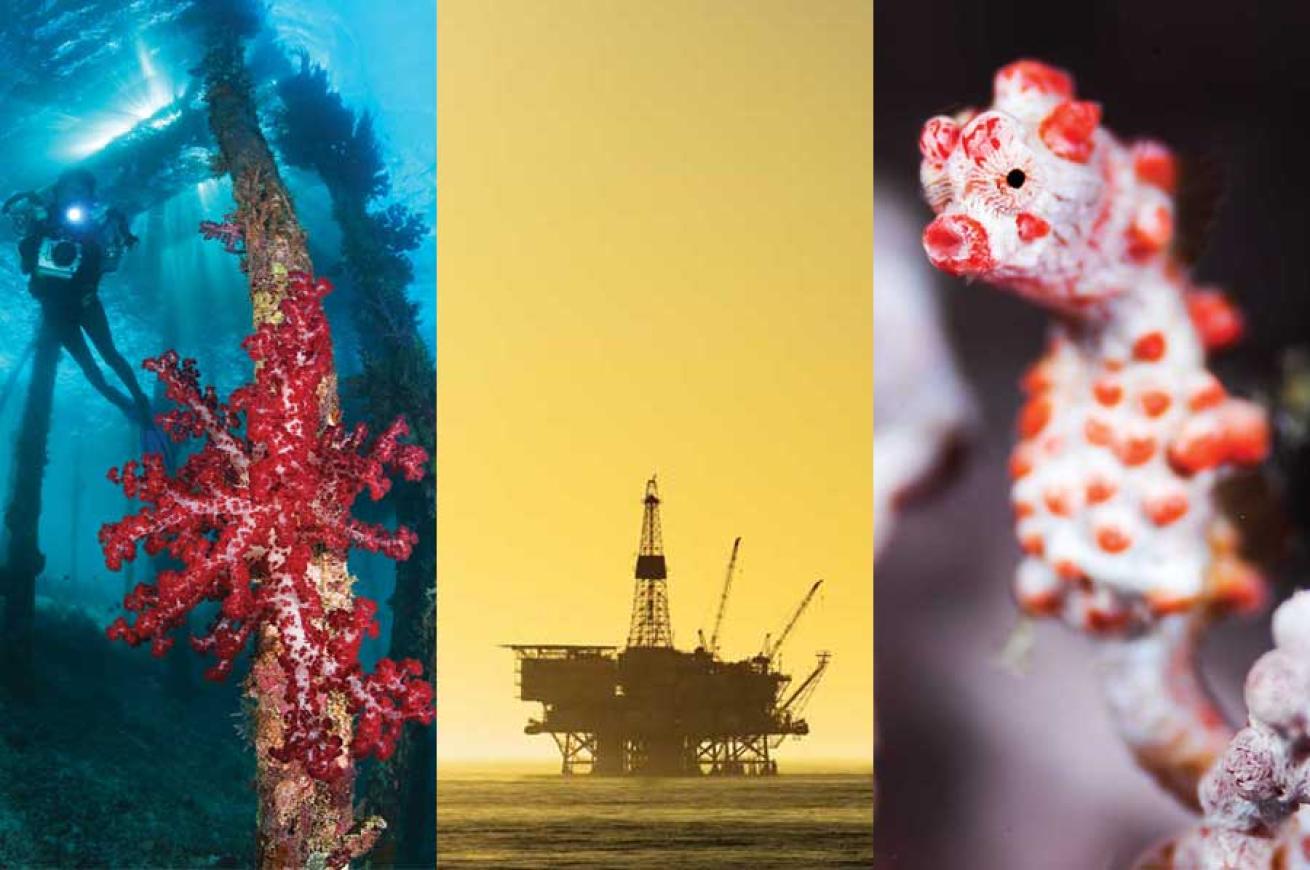
Bridges, piers and oil platforms the world over are prime real estate for attracting marine life, from tiny critters to oceangoing giants. Check out these 10 locations for some of the best structure-diving in the world.
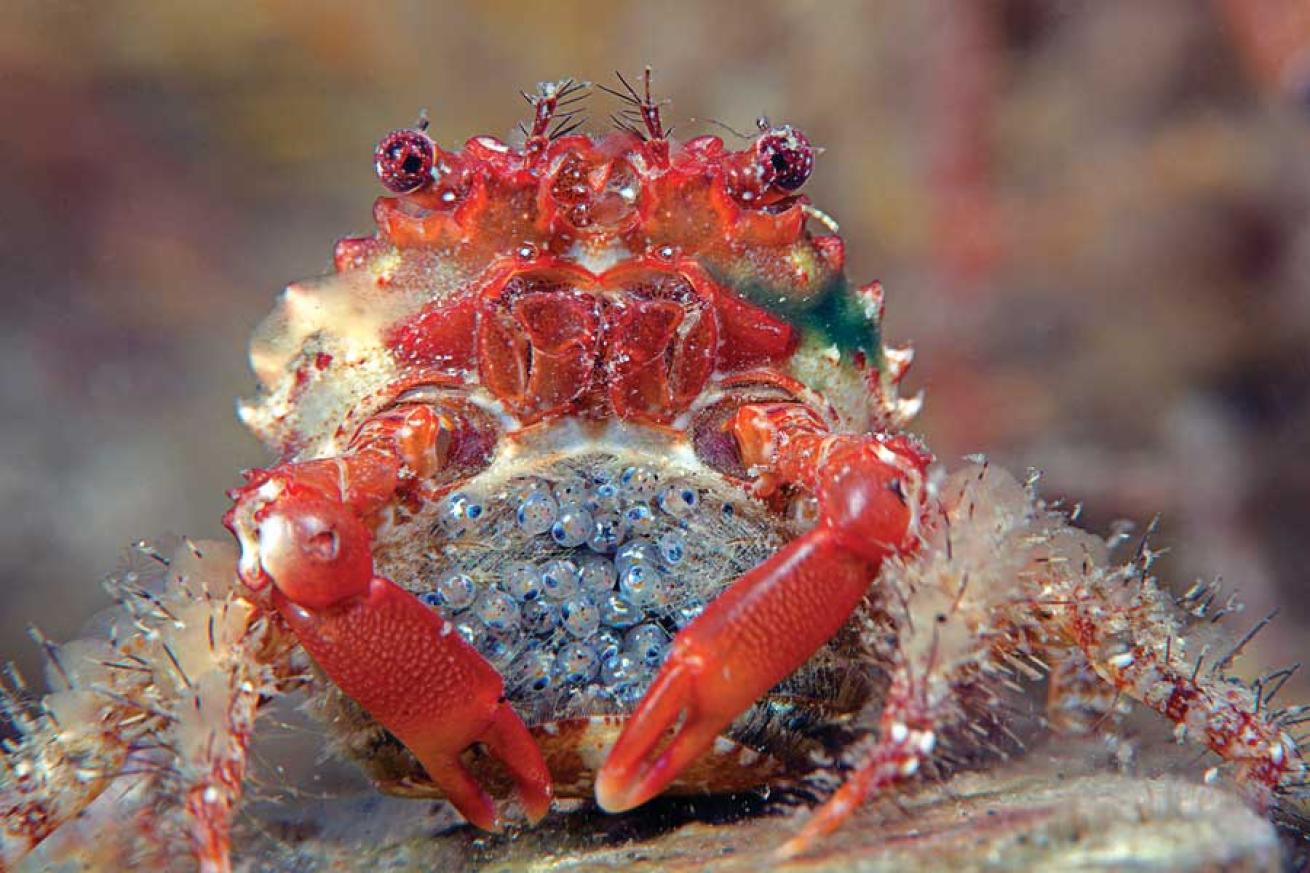
Steven Kovacs/Seapics.com
Nesting crab with eggs, Blue Heron Bridge, Florida
"Topside, it’s anything but attractive — you’d drive right past it,” Gerry Carroll, owner of Jupiter Dive Center, says of Blue Heron Bridge. Underwater, it’s the gathering spot for flashy oddities dwelling among the muck. Less than a mile north of Palm Beach inlet, this site hosts diverse life due to the protection it offers from the large, daily tidal exchange. Seeking sanctuary are seahorses, octopuses, sea robins and decorator crabs. Eagle ray and manatee sightings are also common. You’ll want to enter the water at slack tide, but arrive an hour early — Phil Foster Park might not look like much, but people value its choice location.
Go Now: jupiterdivecenter.com
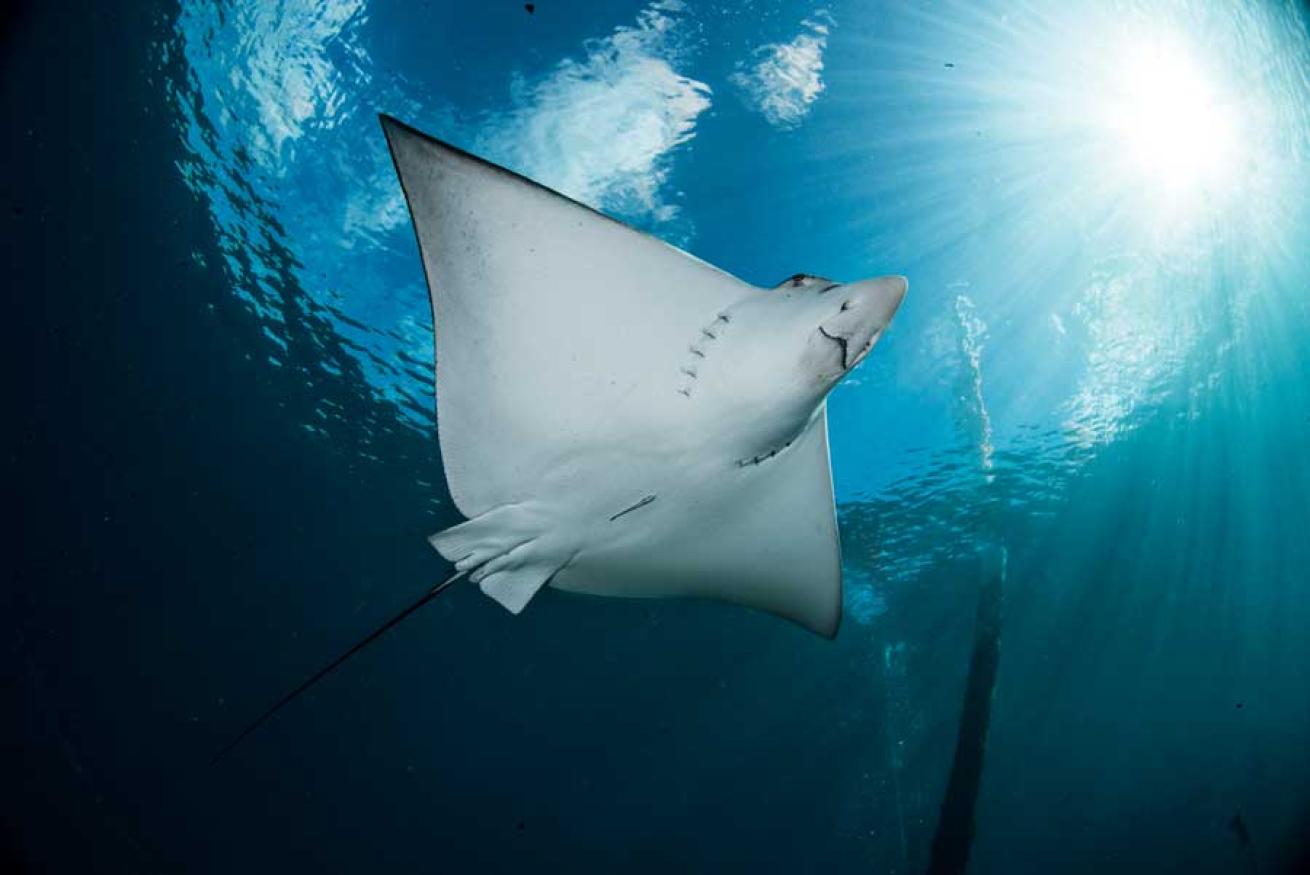
Tanya G. Burnett
Spotted eagle ray, Blue Heron Bridge, Florida
Not all the creatures are small at this world-famous site.
Go Now: jupiterdivecenter.com
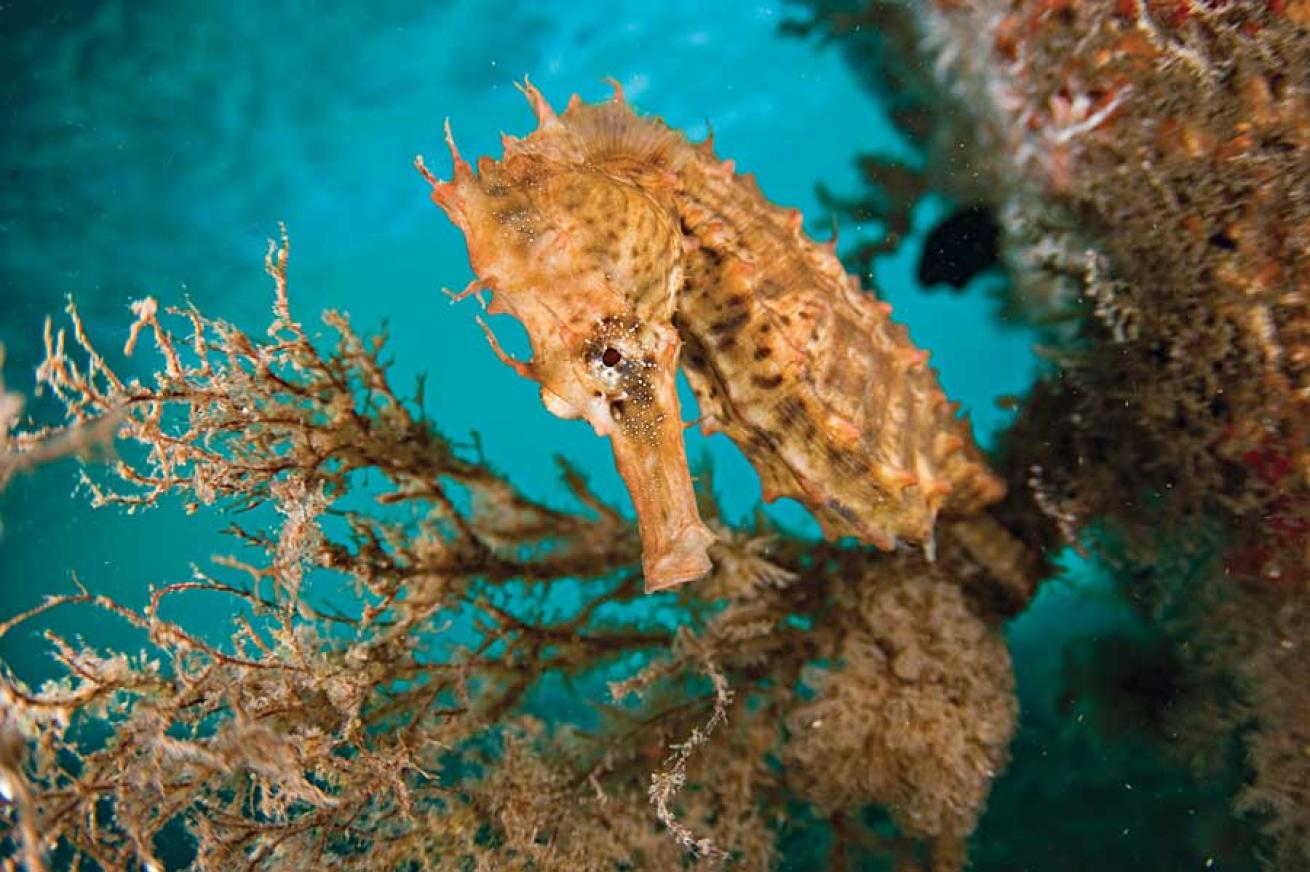
Michael Patrick O'Neill
Lined seahorse, Blue Heron Bridge, Florida
Blue Heron packs in a lot of delightful critters.
Go Now: jupiterdivecenter.com
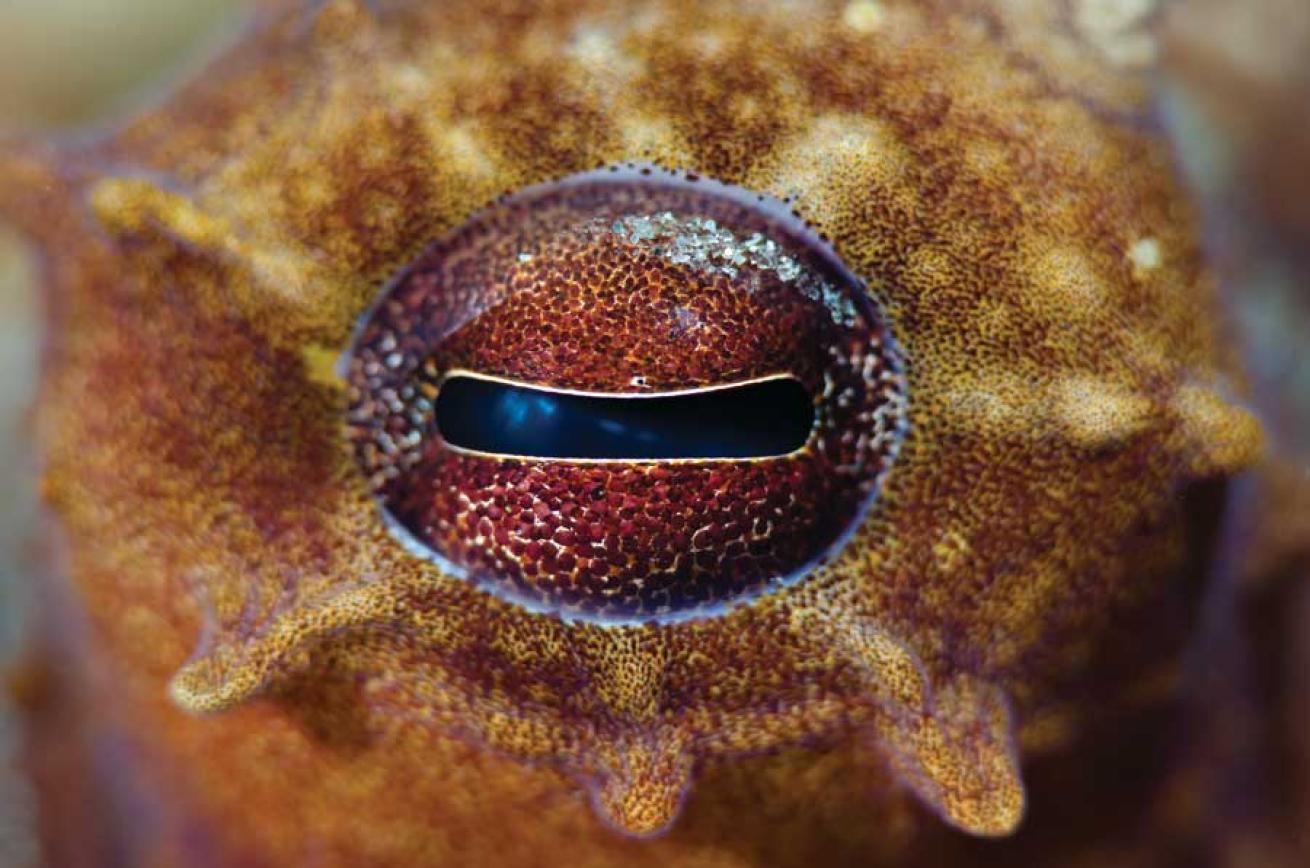
Tanya G. Burnett
Close-up of eye, Blue Heron Bridge, Florida
This Riviera Beach location is perfect for perfecting your macro photography.
Go Now: jupiterdivecenter.com
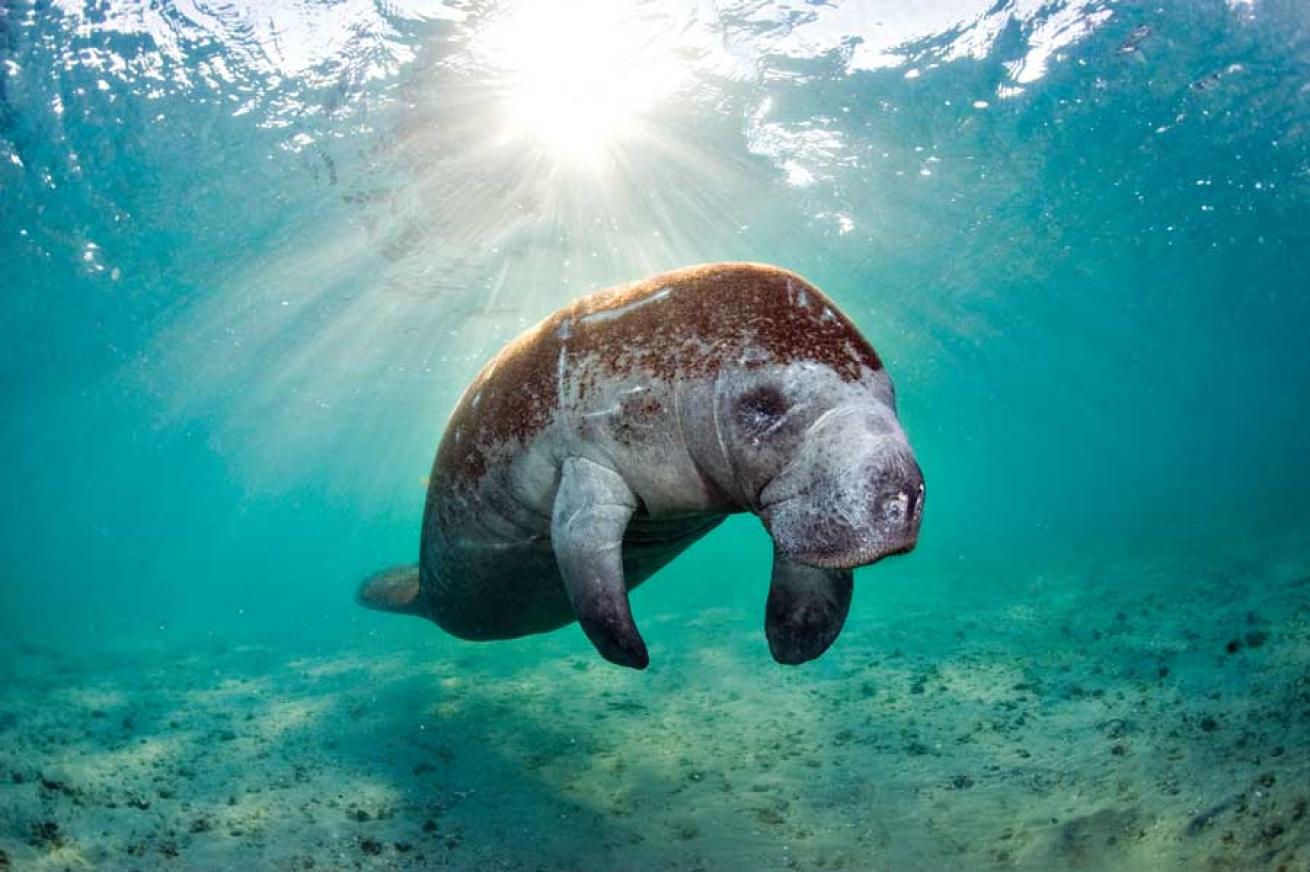
Michael Patrick O'Neill
Endangered Florida manatee, Blue Heron Bridge, Florida
Manatees just might join the party during your dive.
Go Now: jupiterdivecenter.com
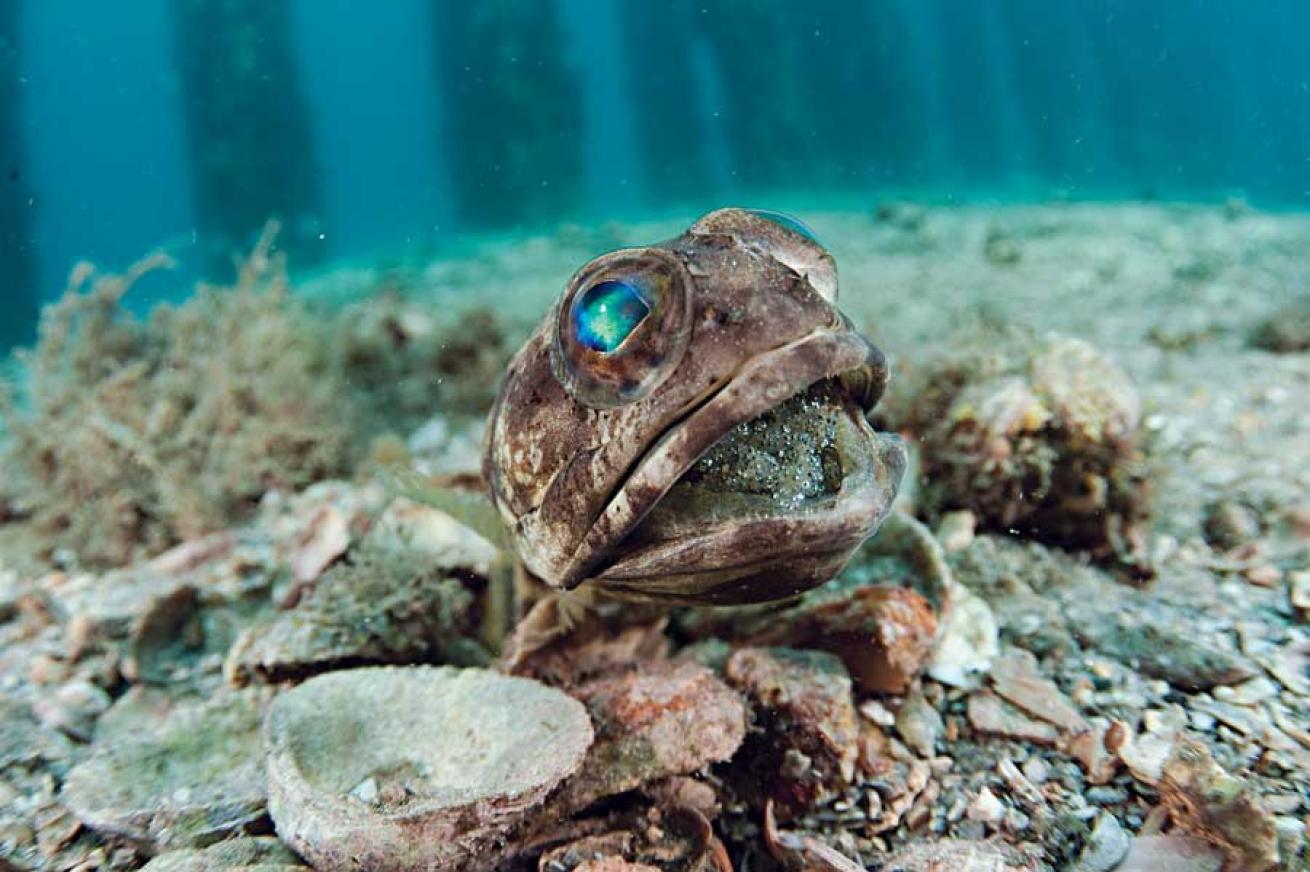
Michael Patrick O'Neill
Male banded jawfish incubating and aerating a clutch of eggs, Blue Heron Bridge, Florida
Blue Heron Bridge has been compared to Indonesia's Lembeh Strait.
Go Now: jupiterdivecenter.com
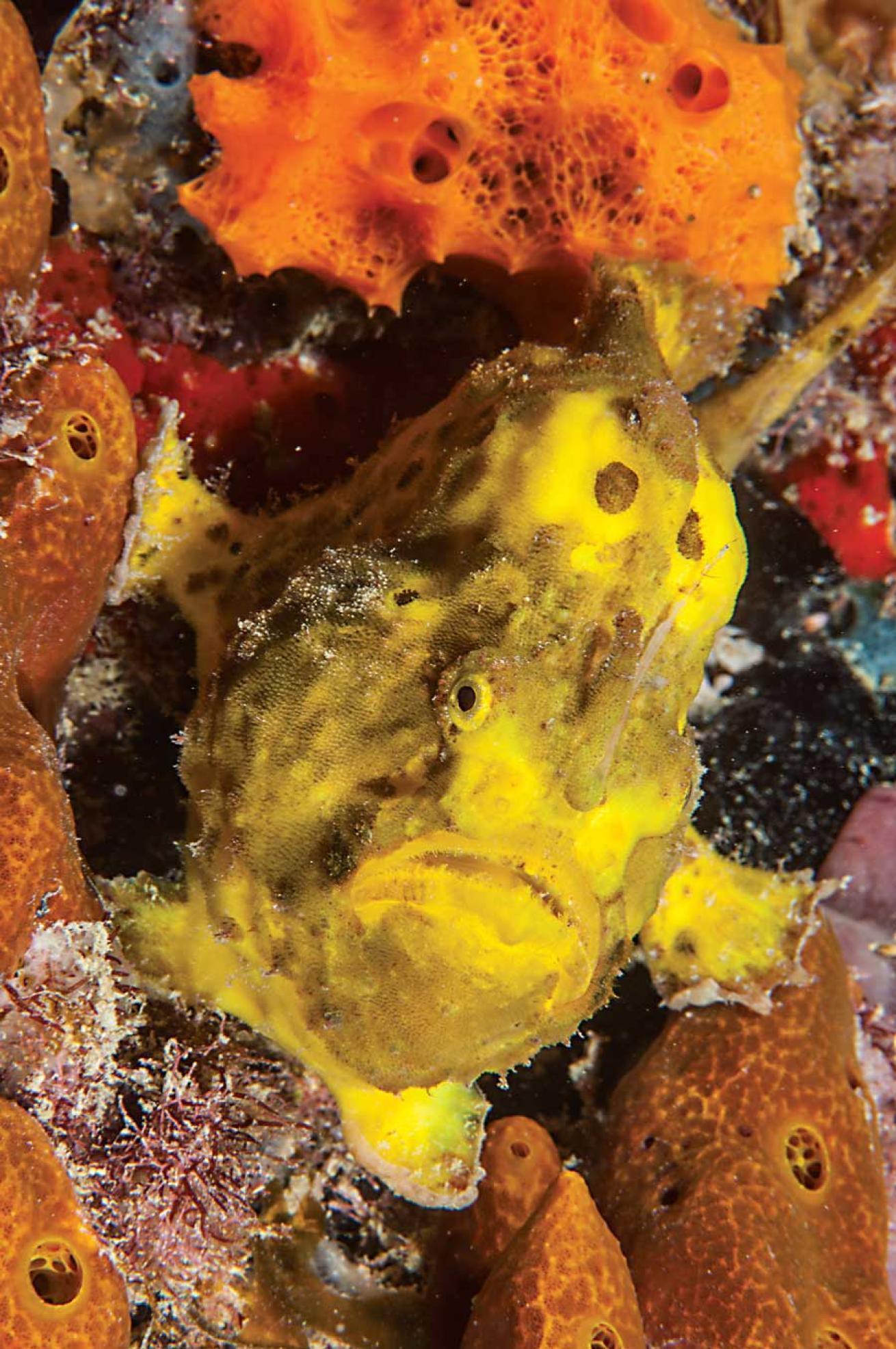
Cor Bosman
Frogfish, Frederiksted Pier, St. Croix, U.S. Virgin Islands
It’s a leap of faith,” says scuba instructor Sam Halvorson of the 12 feet separating those standing on Frederiksted Pier from the water. “I haven’t seen anyone lose a mask yet — but definitely keep your legs together.” The jump is the most direct route to the main pilings, covered in sponges, and frogfish, seahorses, crabs and eels that live among them — the other option is to enter shallower and kick past a mass of boulders where juvenile lobsters and trunkfish hide. On the sand, batfish, stingrays and octopuses are common. Look up and toward open water for tarpon, barracuda, schools of Atlantic spadefish — and local school kids. That same plummet that’s a bit hairy for divers is child’s play, literally, for island kids who might not have access to a high dive if it weren’t for the pier.
Go Now: stcroixscuba.com
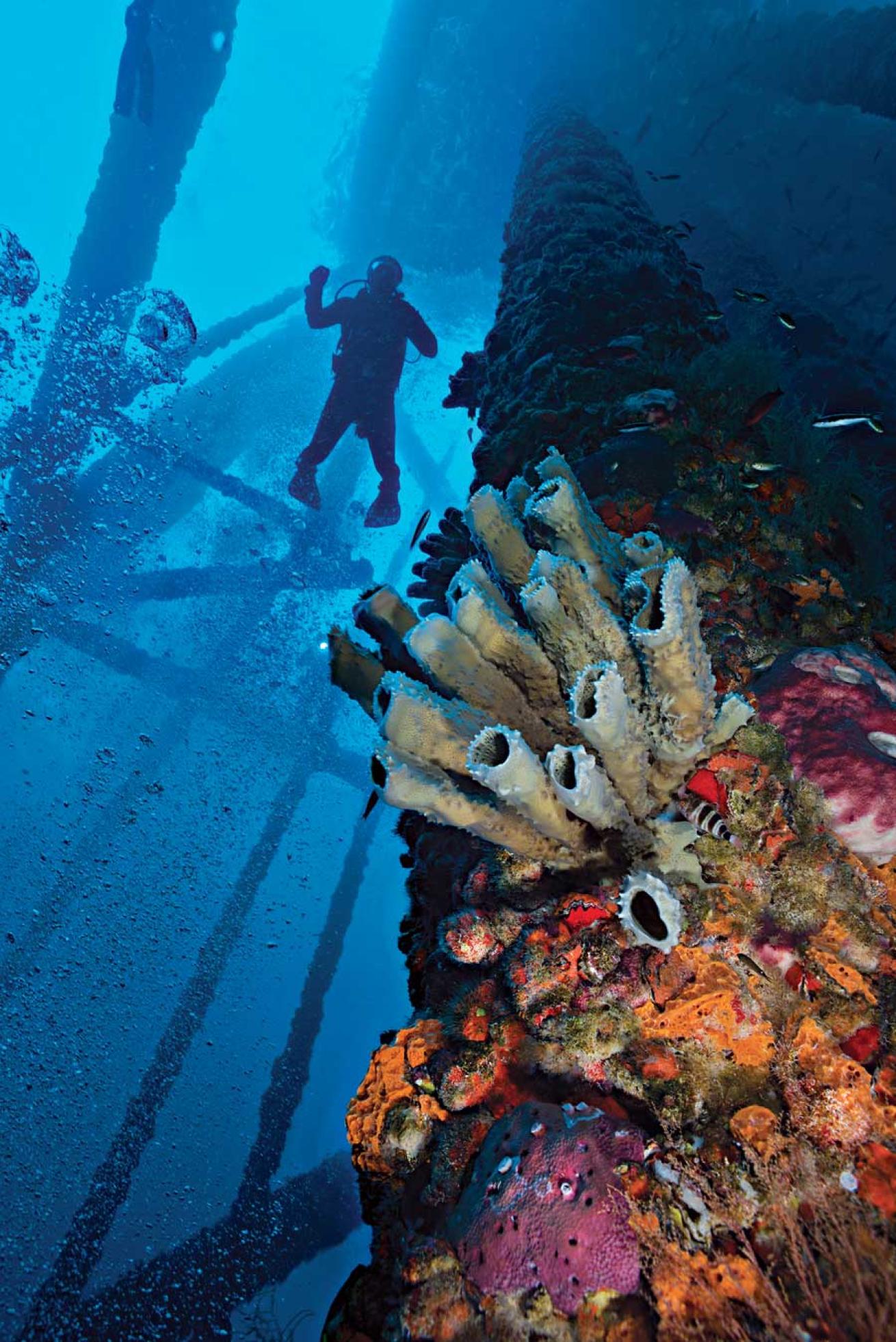
Jesse Cancelmo
High Island 389-A, Flower Garden Banks NMS, Texas
Part of its fate is sealed: High Island 389-A is now inactive. Where it ends up is still uncertain, but it won’t stay in its current position 100 miles southeast of Galveston, Texas, in the Flower Garden Banks National Marine Sanctuary. “Right now, life there is incredibly diverse,” says Bland Ellen, captain for Fling Charters, whose liveaboard vessel regularly visits the former oil rig. At the site, divers encounter nudibranchs and a host of macro life nestled among the sponges, as well as whale sharks, mantas, and great and scalloped hammerheads. “Twenty-five hammerheads hung out there all summer,” says Ellen of the 2013 season.
Go Now: flingcharters.com
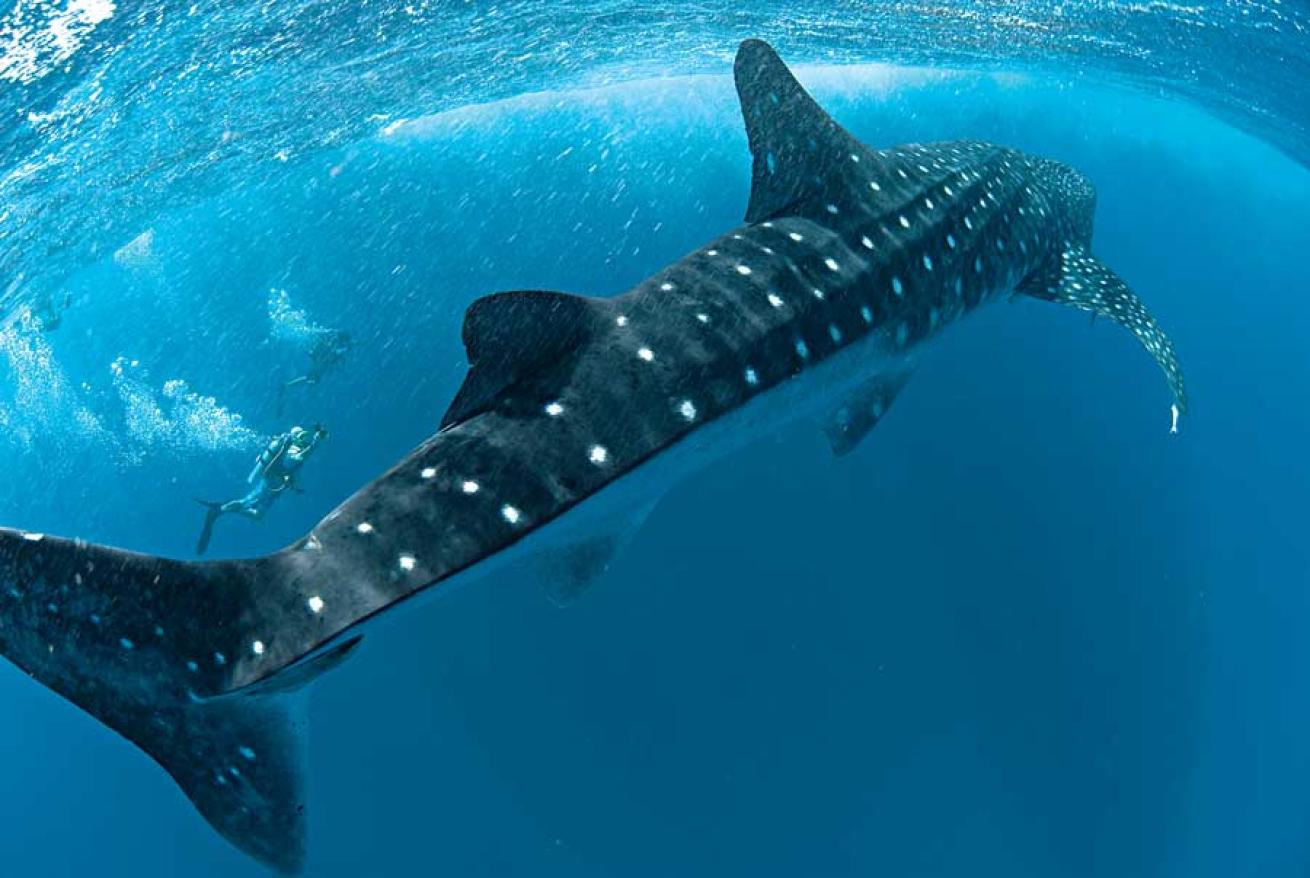
Jesse Cancelmo
Whale shark at High Island 389-A, Flower Garden Banks NMS, Texas
Whale shark encounter? It's not guaranteed, but it's not impossible, either. The world's biggest fish has been known to frequent these Gulf of Mexico waters.
Go Now: flingcharters.com
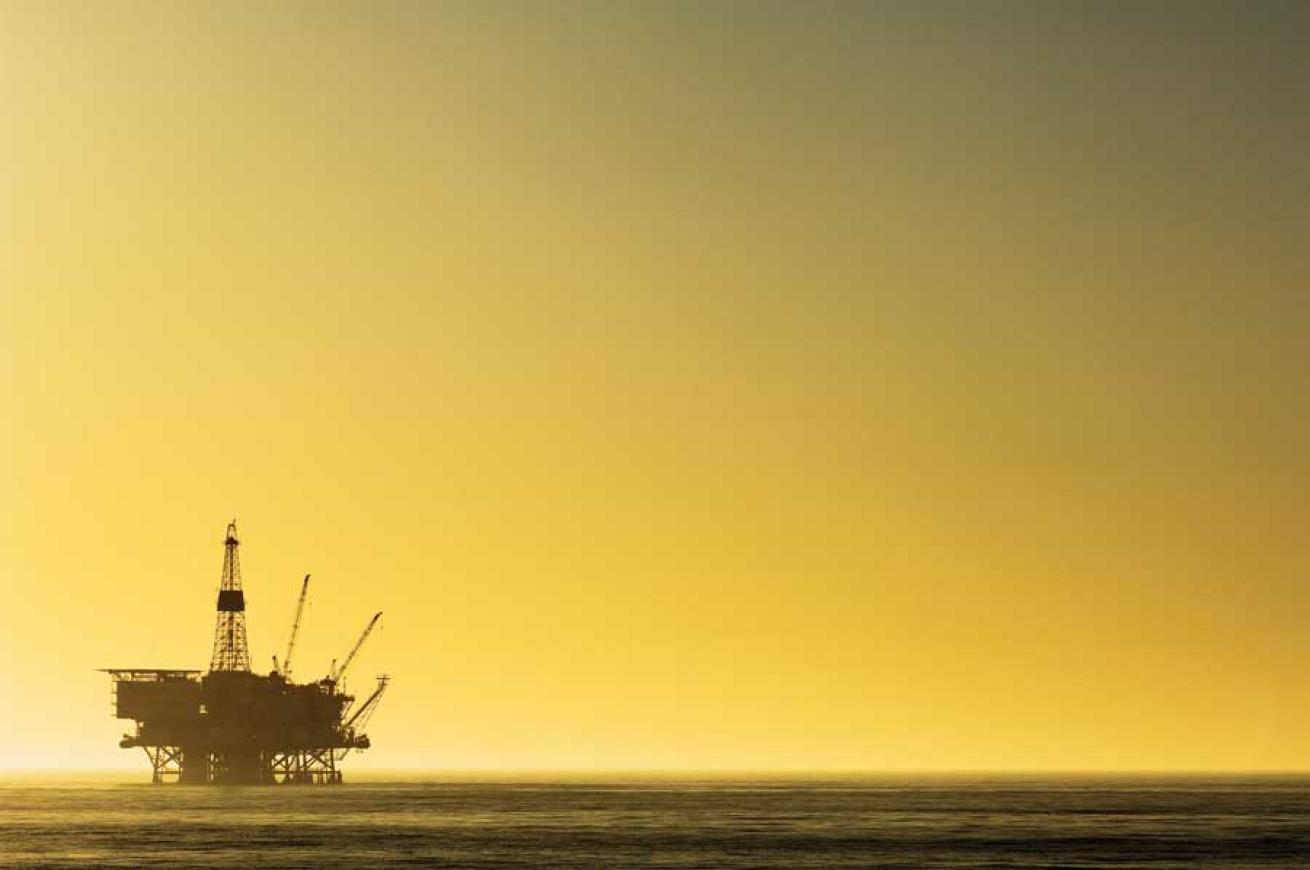
Mauricio Handler/National Geographic Stock
Eureka Oil Platform, Long Beach, California
"I’ve had a whole school of football-size sunfish swim right up to me on Eureka,” says Sundiver International’s Capt. Kyaa Heller of the oil platform 8 miles of Long Beach, California. Of the state’s three diveable oil rigs, Eureka is the best due to its depth in 720 feet of water, and its position amid the channel between the mainland and Catalina Island. Here, nutrient-rich currents run strong, and the marine life is, well, bigger (scallops can grow to 10 inches across). Cabezon, sheephead, calico and lingcod congregate on the shelves created by the pipes. The structure itself is massive, with supports that span 200 feet. Sundiver guests have seen sea lions with pups nursing underwater, and cormorants diving up to 90 feet. “You never know what you’ll encounter,” Heller says.
Go Now: sundiver.net
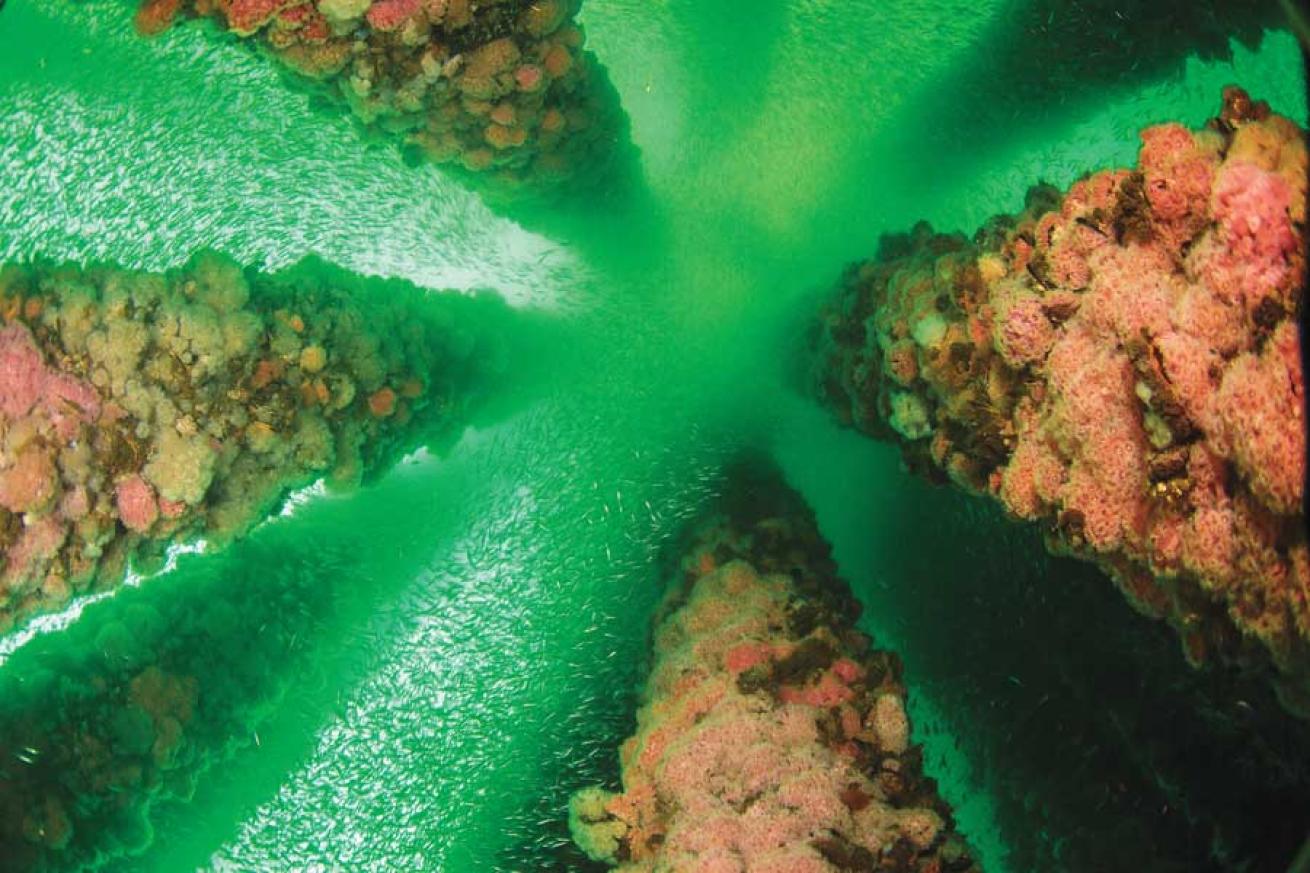
Todd Winner
Eureka Oil Platform, Long Beach, California
The legs of Eureka are carpeted in lush marine life.
Go Now: sundiver.net
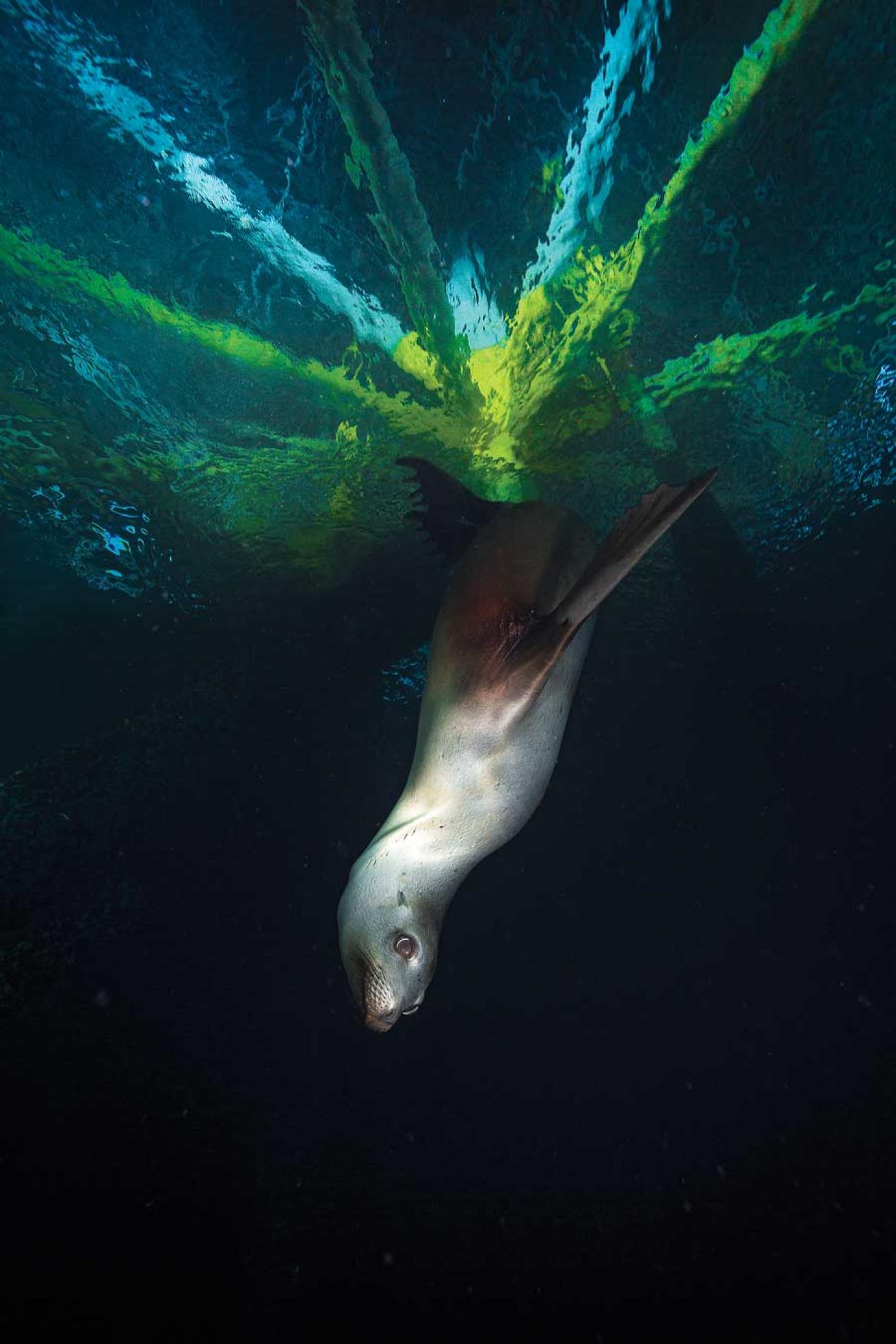
Todd Winner
Eureka Oil Platform, Long Beach, California
Sea lions may be your dive buddies when diving this site.
Go Now: sundiver.net
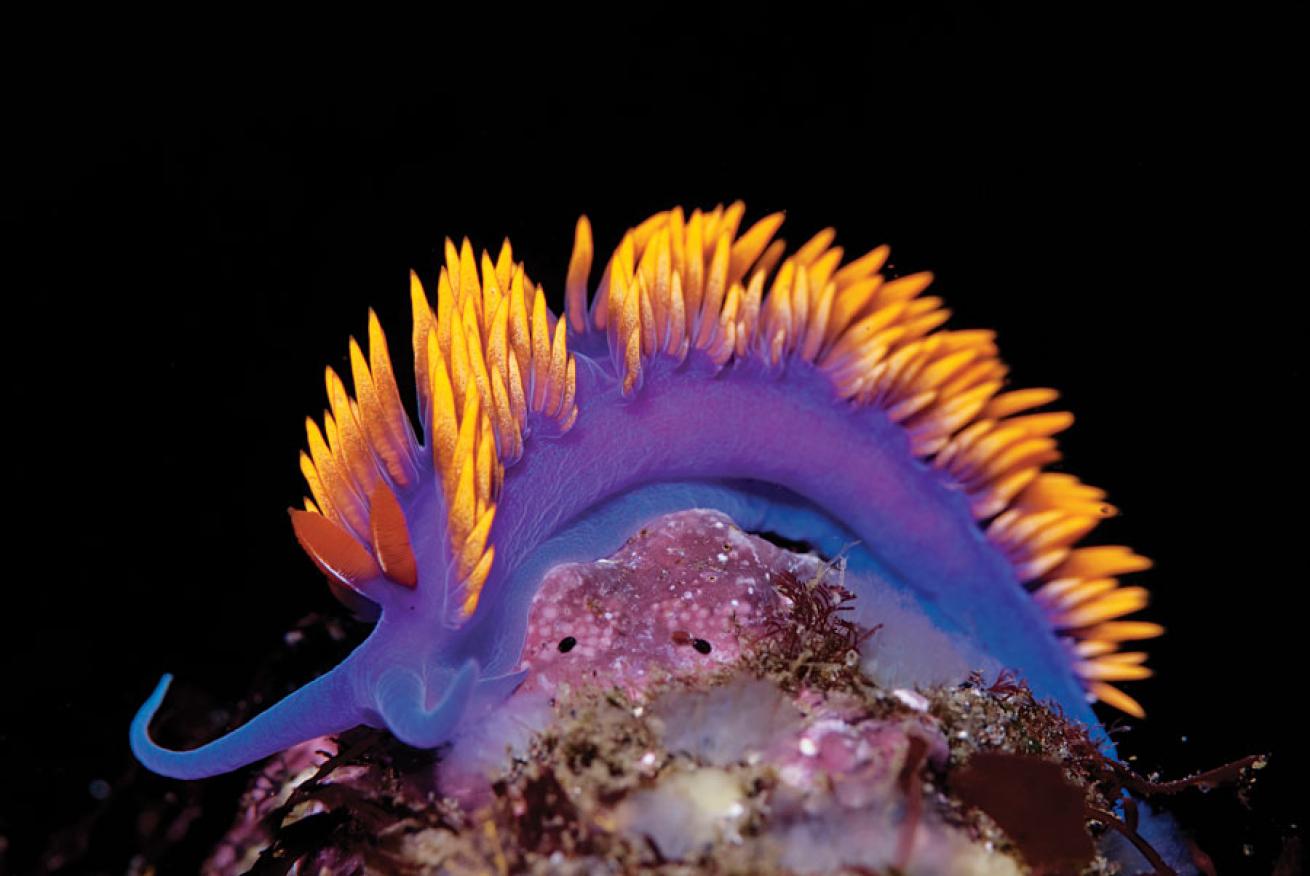
Antonio Busiello
Eureka Oil Platform, Long Beach, California
Look closely for the nudibranch inhabitants of Eureka.
Go Now: sundiver.net
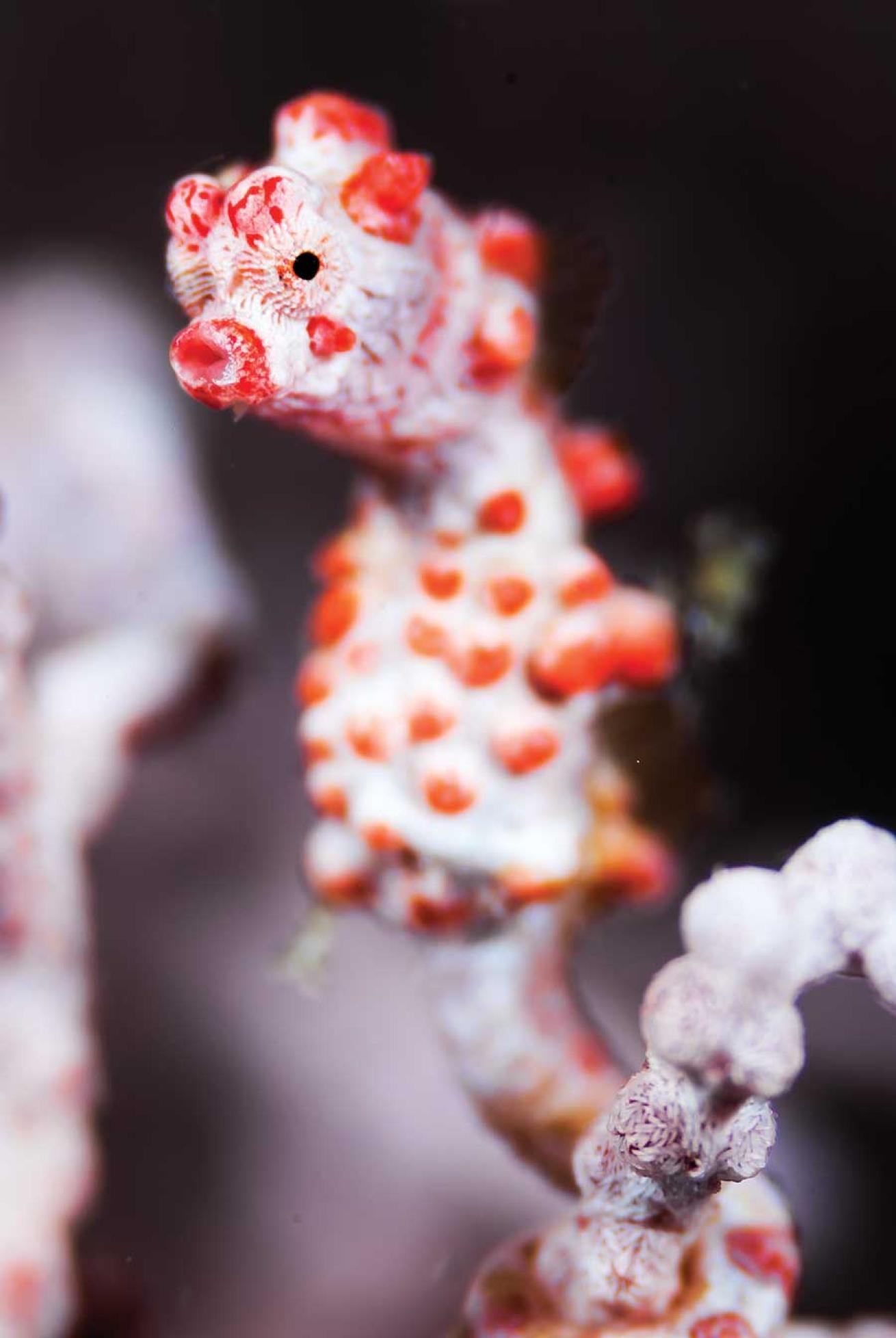
Jason Isley/ Scubazoo Images
Pygmy seahorse, Seaventures Oil Rig Resort, Sabah, Malaysia
It’s the only oil rig converted into a dive resort. Find it 16 miles off the coast of the island of Sabah, Malaysia, where the house reef is a garden of pygmy seahorses, ribbon eels, blue-ringed octopuses, crocodile fatheads and ghost pipefish — yeah, it gets weird quick. If you like your thrills bigger, look to the blue for whale sharks, turtles and schooling barracuda. Regardless of which size maters more to you, you’ll like the entry: Guests suit up and stroll to the open-air platform elevator, which has its end of the line below the waterline.
Go Now: seaventuresdive.com
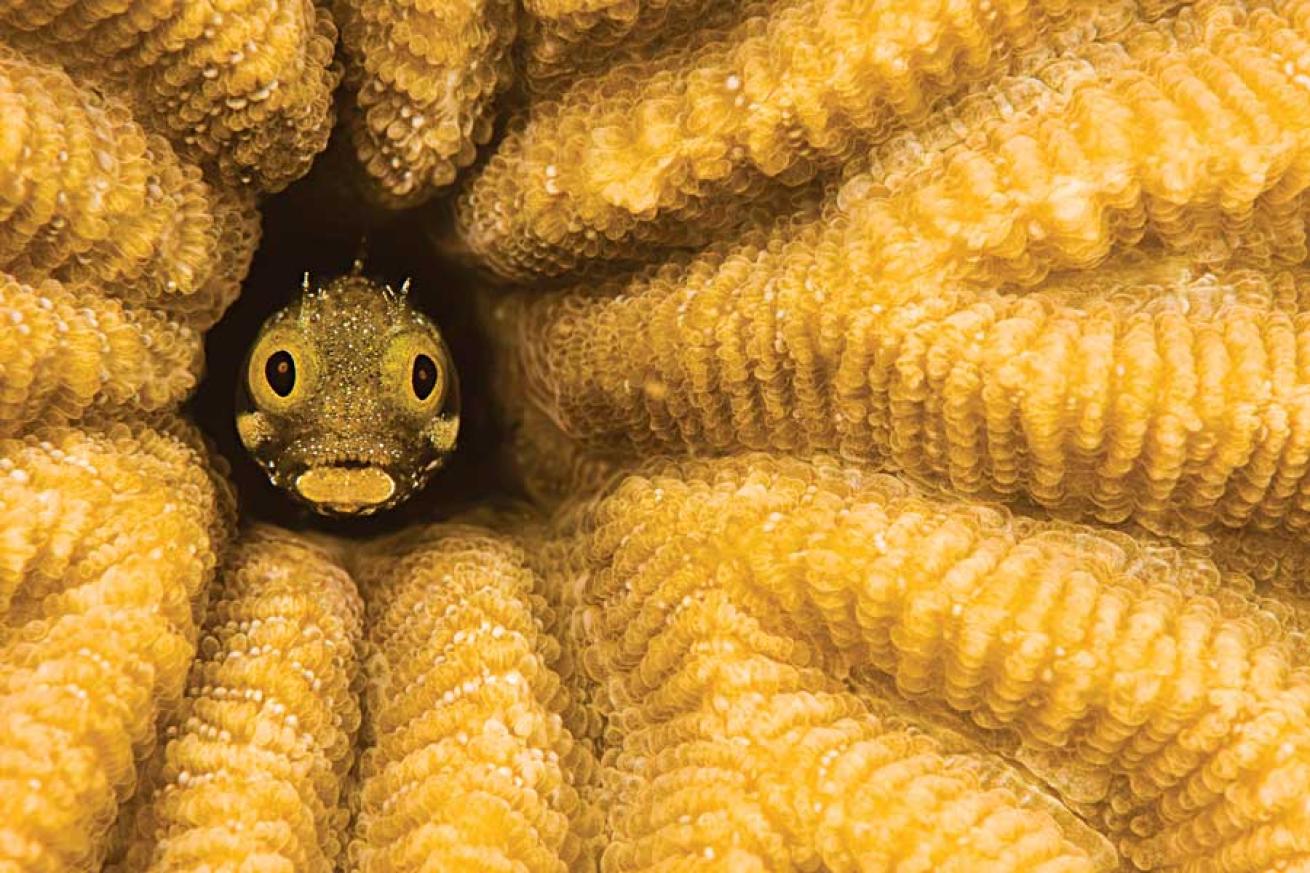
David Fleetham
Spinyhead blenny, Salt Pier, Bonaire
Bonaire’s Salt Pier is on private land and diveable only with a guide. Augusto Montbrun, dive operations manager at Buddy Dive Resort, says that’s not a deterrent. “Whatever is forbidden becomes more attractive to people,” he says of the site, which is more popular since Town Pier closed to divers. Keep your focus wide to see eagle rays, tarpon, barracuda and lobsters. Narrow it to find frogfish, seahorses and other creatures. Naturalist Ned DeLoach found a clown crab there, Montbrun says. “He’d spent years looking for it elsewhere.”
Go Now: buddydive.com
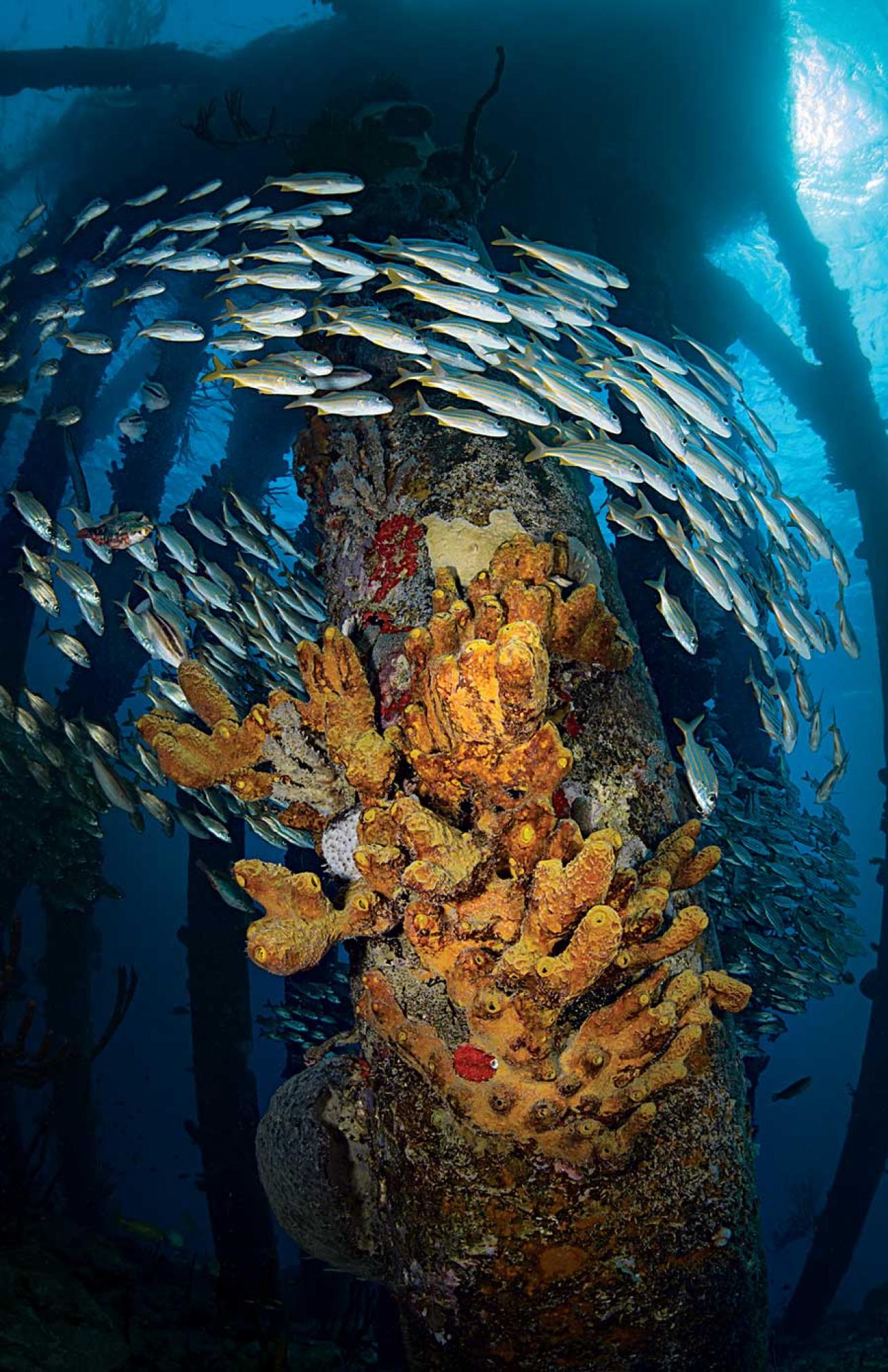
Jennifer O'Neil
Salt Pier, Bonaire
An underwater view of the pier.
Go Now: buddydive.com
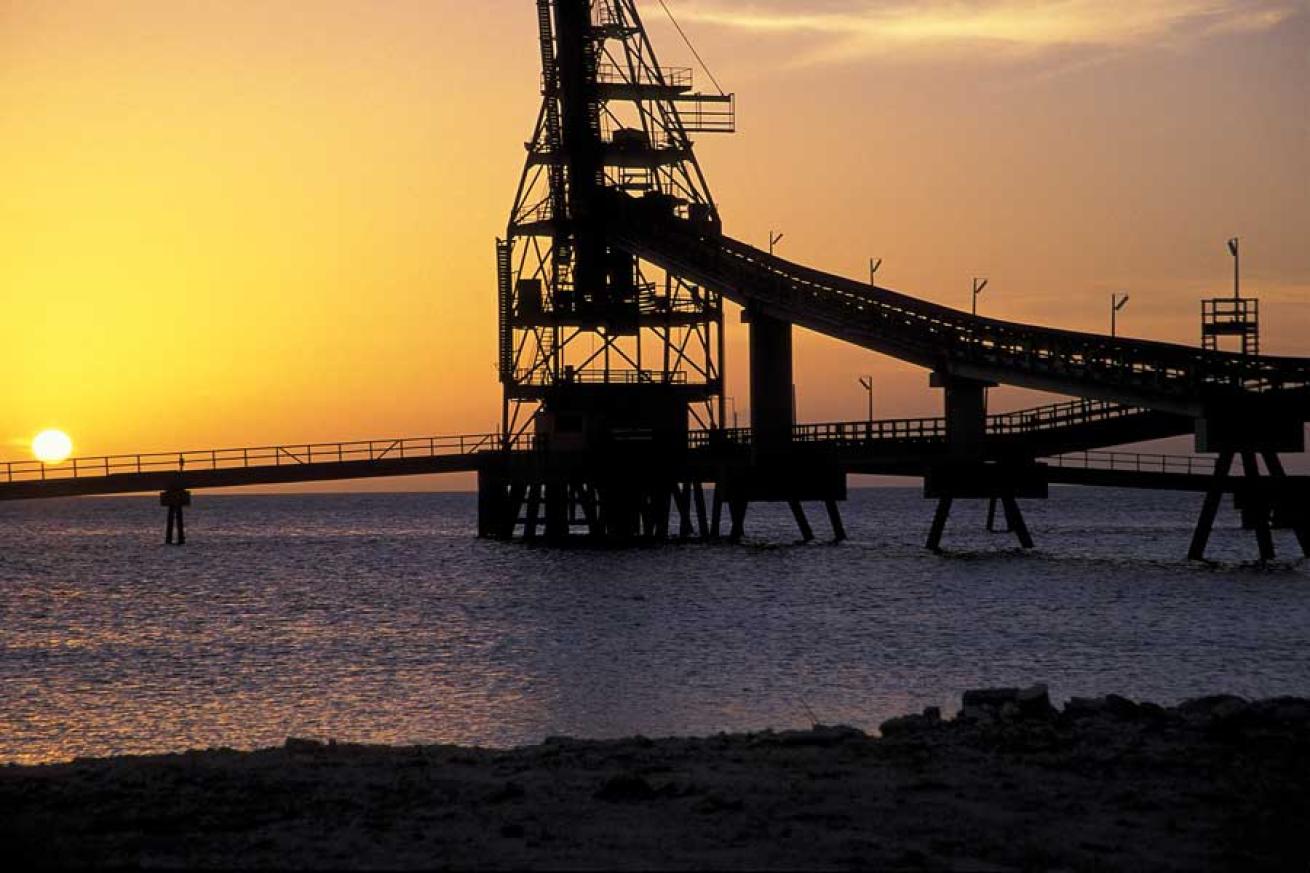
Bill Harrigan, Seapics.com
Salt Pier, Bonaire
The sun sets over Salt Pier.
Go Now: buddydive.com
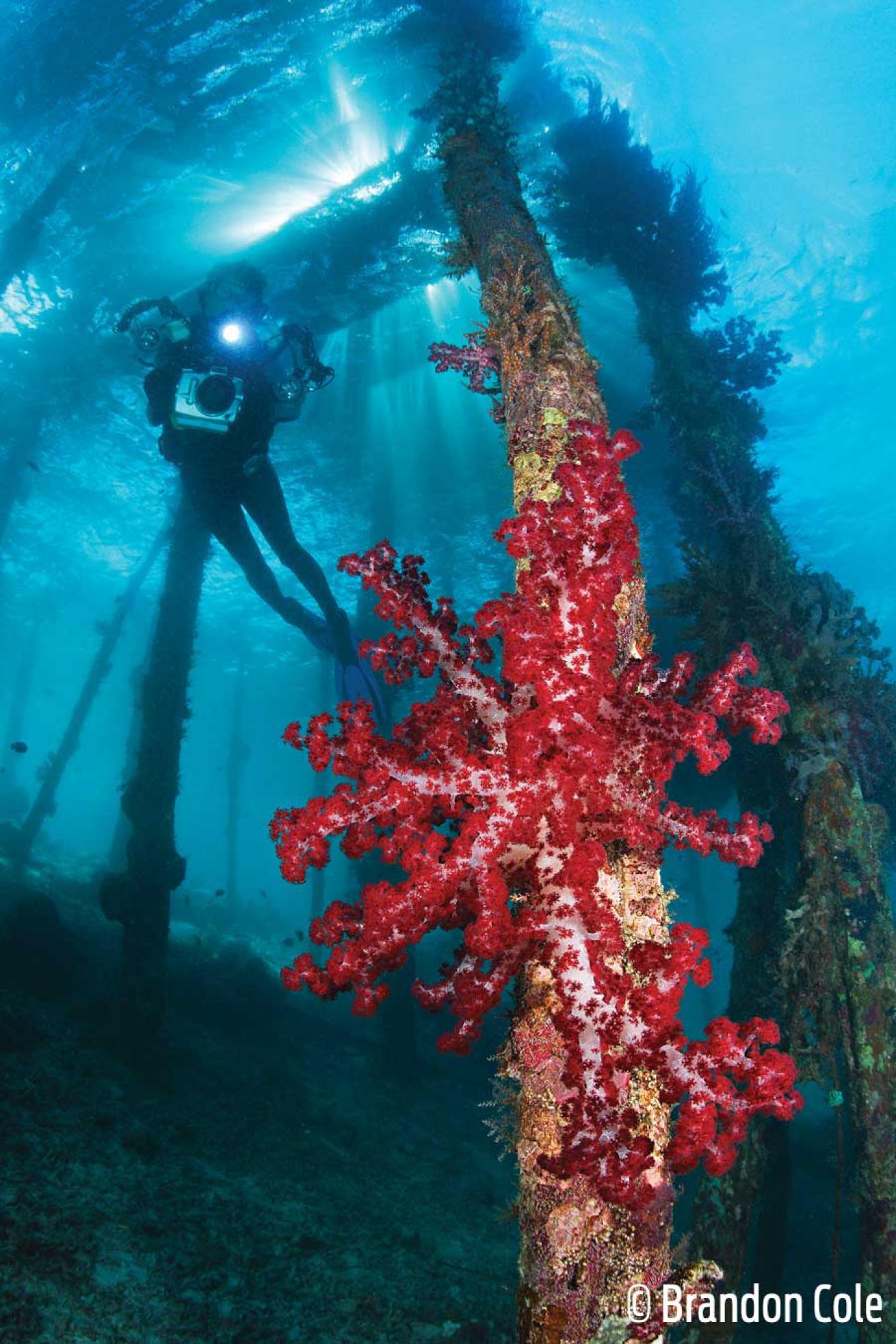
Brandon Cole
Arborek Jetty, Raja Ampat, Indonesia
Pink and purple soft corals drape the Arborek Jetty posts in the Indonesian archipelago of Raja Ampat. Walking sharks lumber across the muck via their pectoral fins. At night, the juvenile pinnate spadefish appear as a gossamer orange-ribbon outline of a fish. The Lembeh sea dragon dwells here alongside toadfish, blue-ringed octopuses, mandarinfish, algae shrimp, Pontohi pygmy seahorses and much more. The site is also next to Manta Sandy, so sightings of a certain plankton gobbler are common. Debbie Arriaga, Arenui liveaboard cruise director, says these are reasons the site is a favorite. “It’s one of the coolest places to be a dive guide — it’s so easy to show something to everyone.”
Go Now: thearenui.com
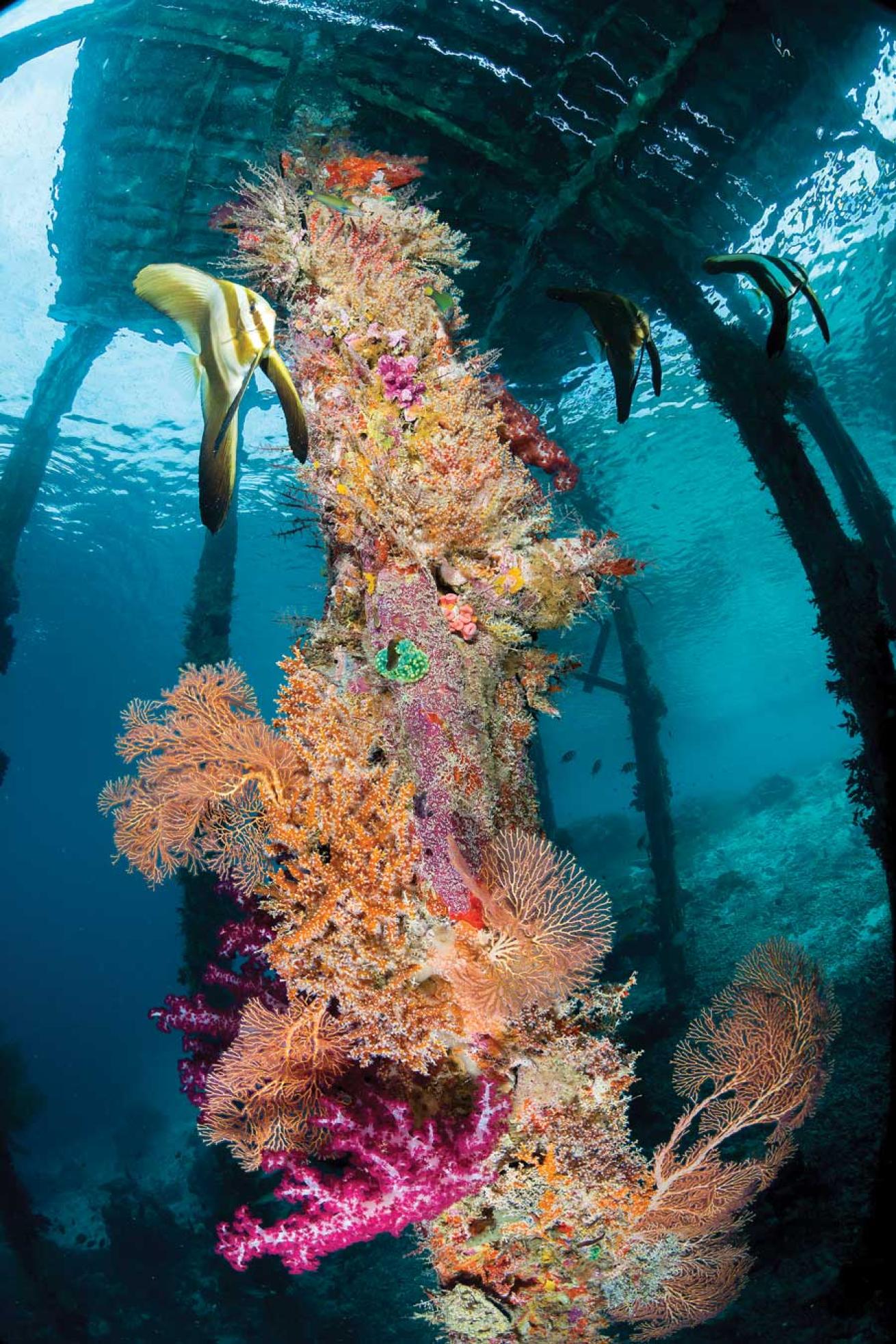
Phil Sokol
Arborek Jetty, Raja Ampat, Indonesia
This jetty is considered one of the world's best dives.
Go Now: thearenui.com
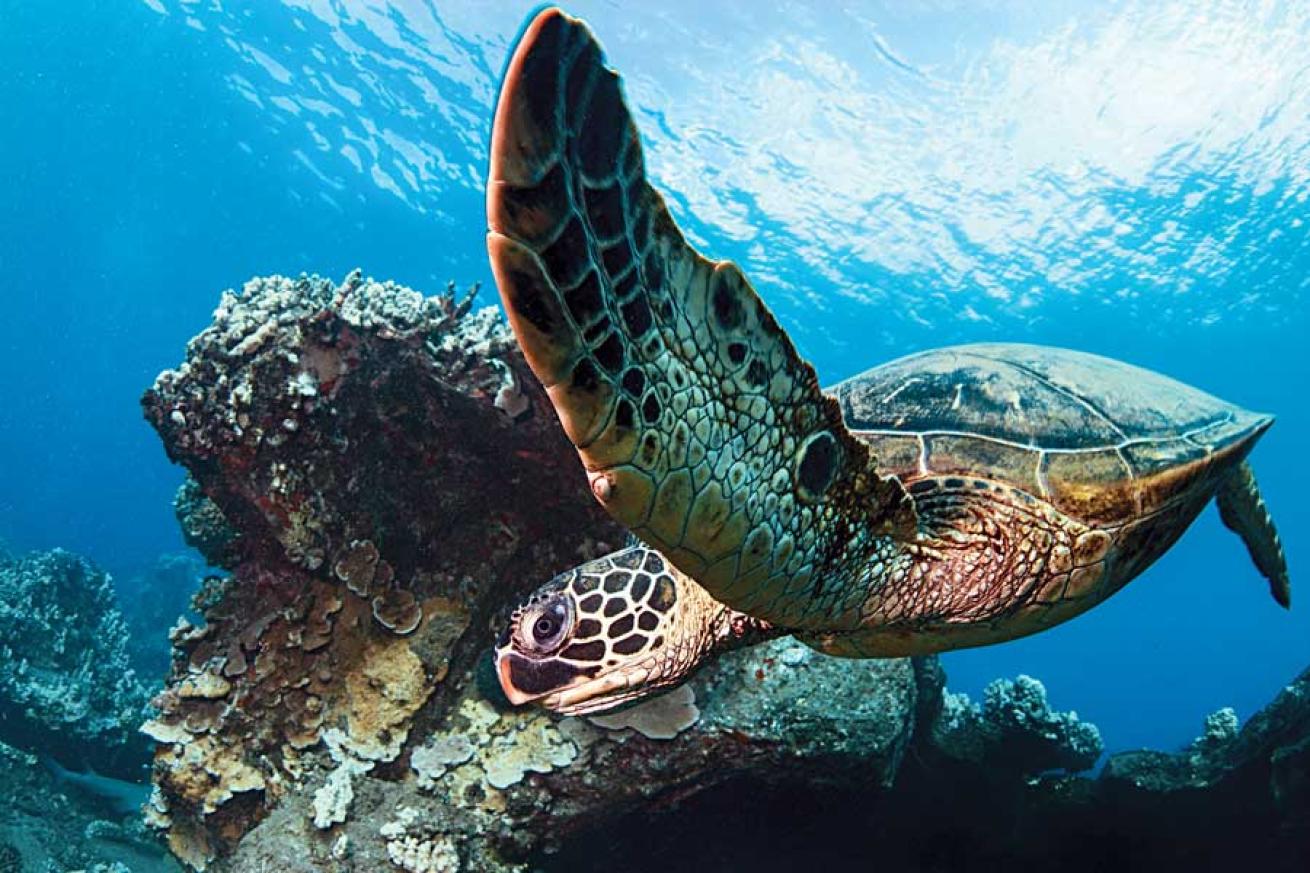
Tom Radio
Mala Pier, Maui, Hawaii
Like a rough hand in a game of Jenga, 1992’s Hurricane Iniki shook the loose structure that was Maui’s Mala Pier — poorly made, it never received boats — and sent it underwater. Now, the 20-foot slabs of concrete lie helter-skelter and covered in coral, creating a labyrinth where zebra morays, snowflake eels, Commerson’s frogfish and loads of endemic reef fish make homes. “It’s a sandy area, so eagle rays pass by,” says Tim Means, Lahaina Divers general manager. “And of course there are turtles — almost always turtles.” Between 20 and 30 feet in depth, it affords leisurely bottom times. “You can poke around for days and keep finding new stuff.”
Go Now: lahainadivers.com
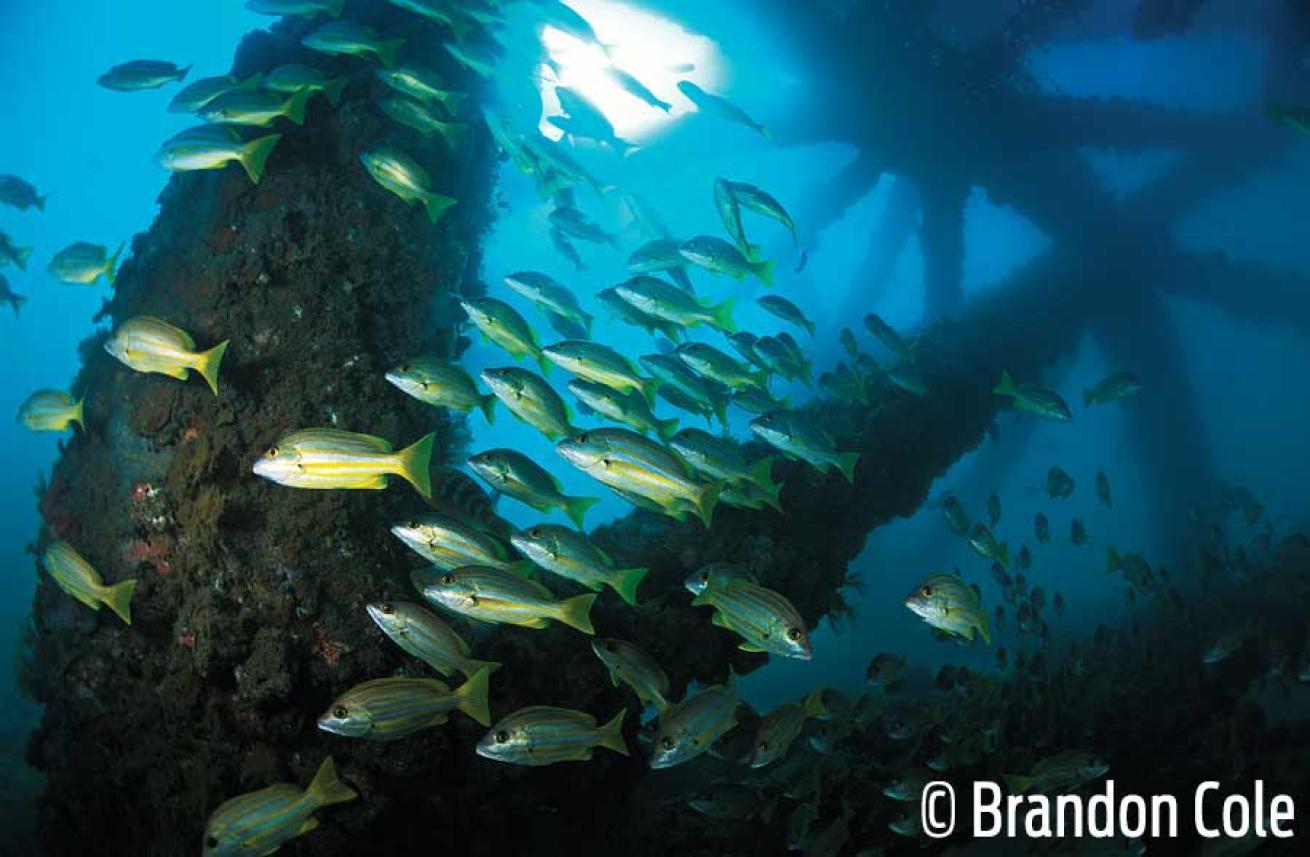
Brandon Cole
Exmouth Navy Pier, Western Australia
The nearby Ningaloo Reef absorbs most of the attention — after all, whale sharks sell seats on dive boats. But the starting point for those adventures, the Western Australia town of Exmouth, has the Navy Pier, itself worth an ocean-crossing plane ride. Spread beneath the nearly 1,000-foot structure are piles of wobbegongs (aka carpet sharks), whitetip reef sharks and octopuses. Also jockeying for real estate on the bottom are scorpionfsh, stargazers and a host of nudibranchs. The thousands-thick schools of trevally and grunts are so prevalent, divers inside can’t see out — bad news when an estuarine cod swims past.
Go Now: ningaloowhalesharkndive.com.au
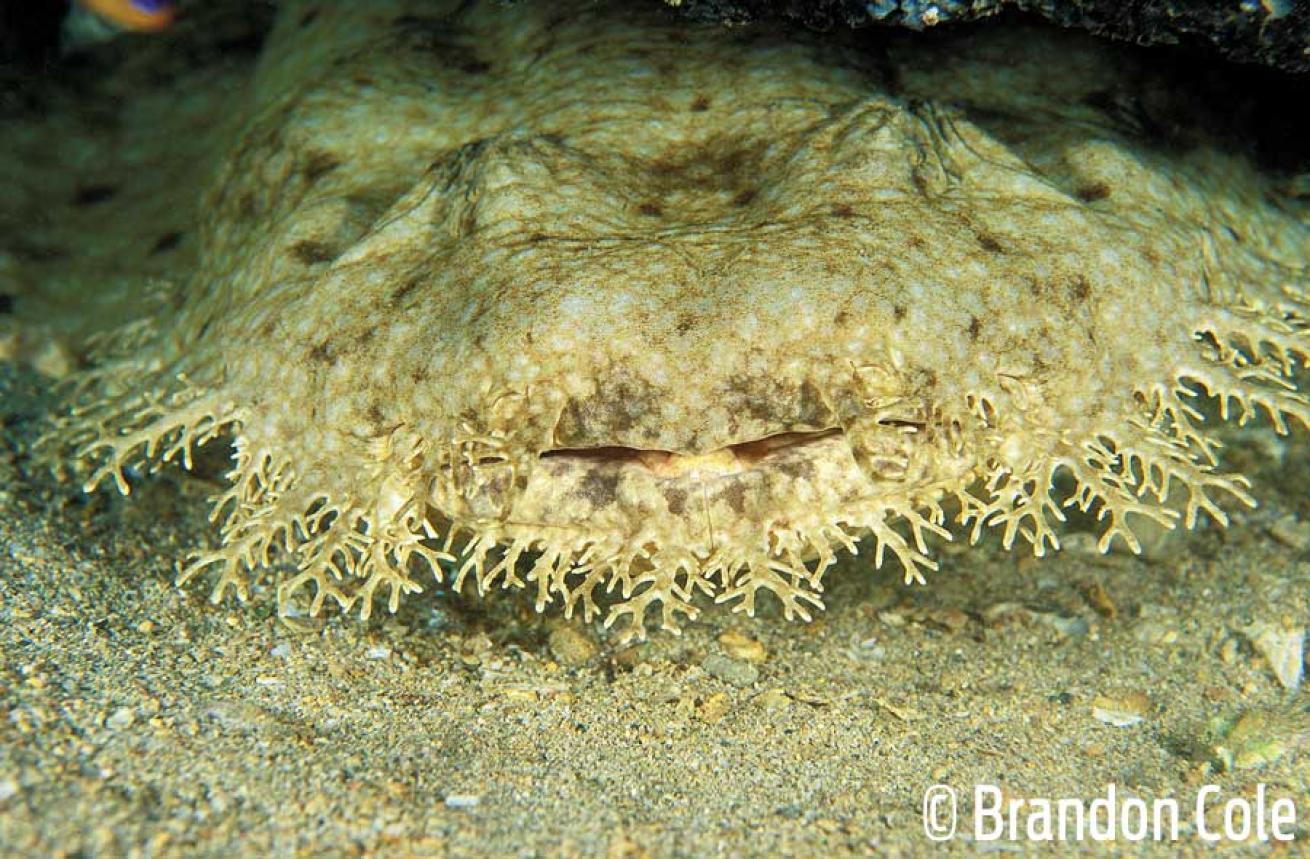
Brandon Cole
Exmouth Navy Pier, Western Australia
Find wobbegong sharks on the bottom.
Go Now: ningaloowhalesharkndive.com.au
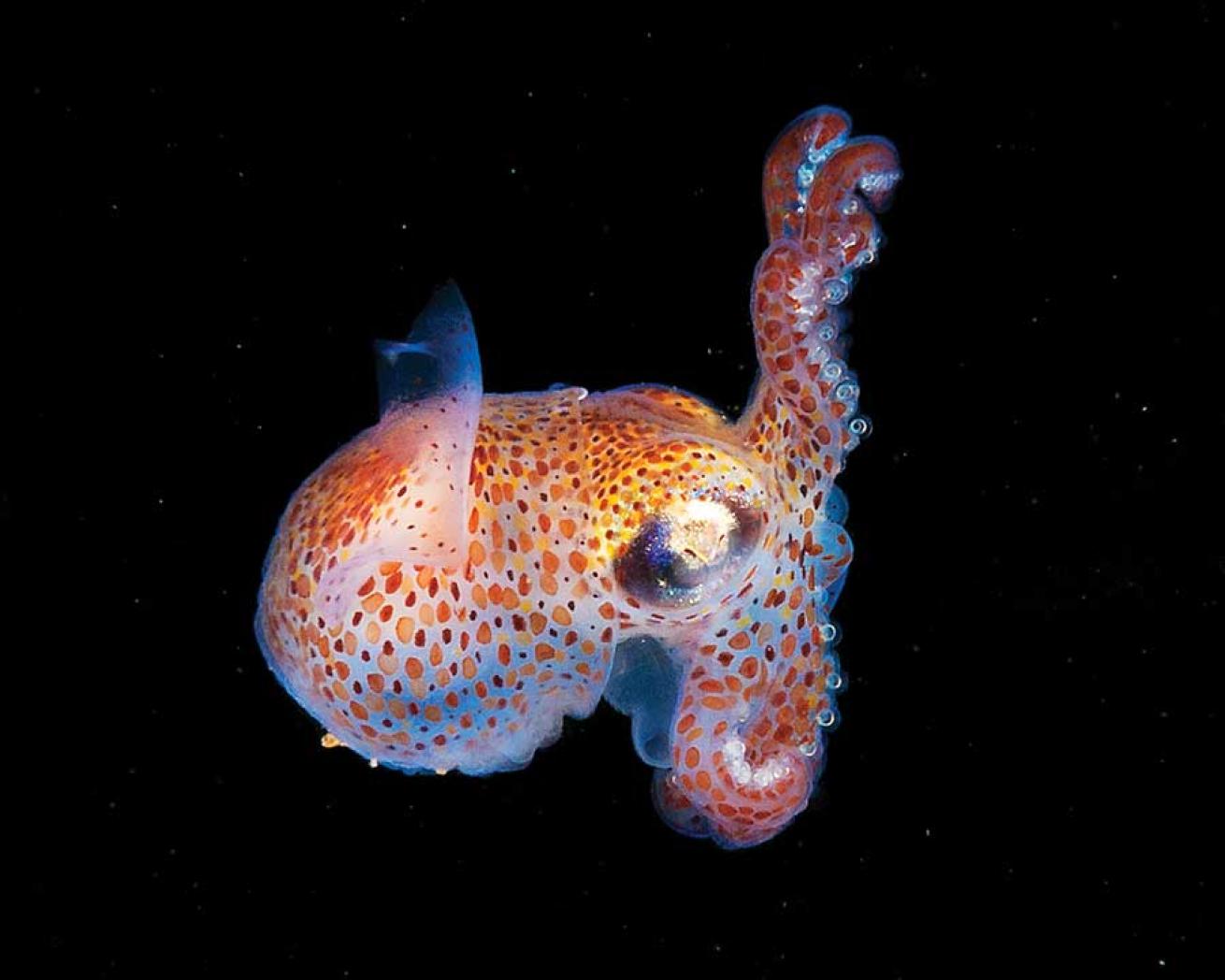
Tom Radio
Fox Island Bridge, Tacoma, Washington
It’s nicknamed Nudibranch Central: During one dip at Fox Island Bridge, divers can locate up to 10 species, including the clown, white-lined dirona and three-lined aeolid varieties. This South Puget Sound site is easy to access: It’s about 22 minutes east of Tacoma by car, and begins on the bridge’s south end. The supports span 60 feet high, and are painted with anemones, sea stars and sponges. Because the currents can be extremely strong, coordinate entry with the slack tide; days with lower tidal exchanges offer more-favorable conditions.
Go Now: underwatersports.com
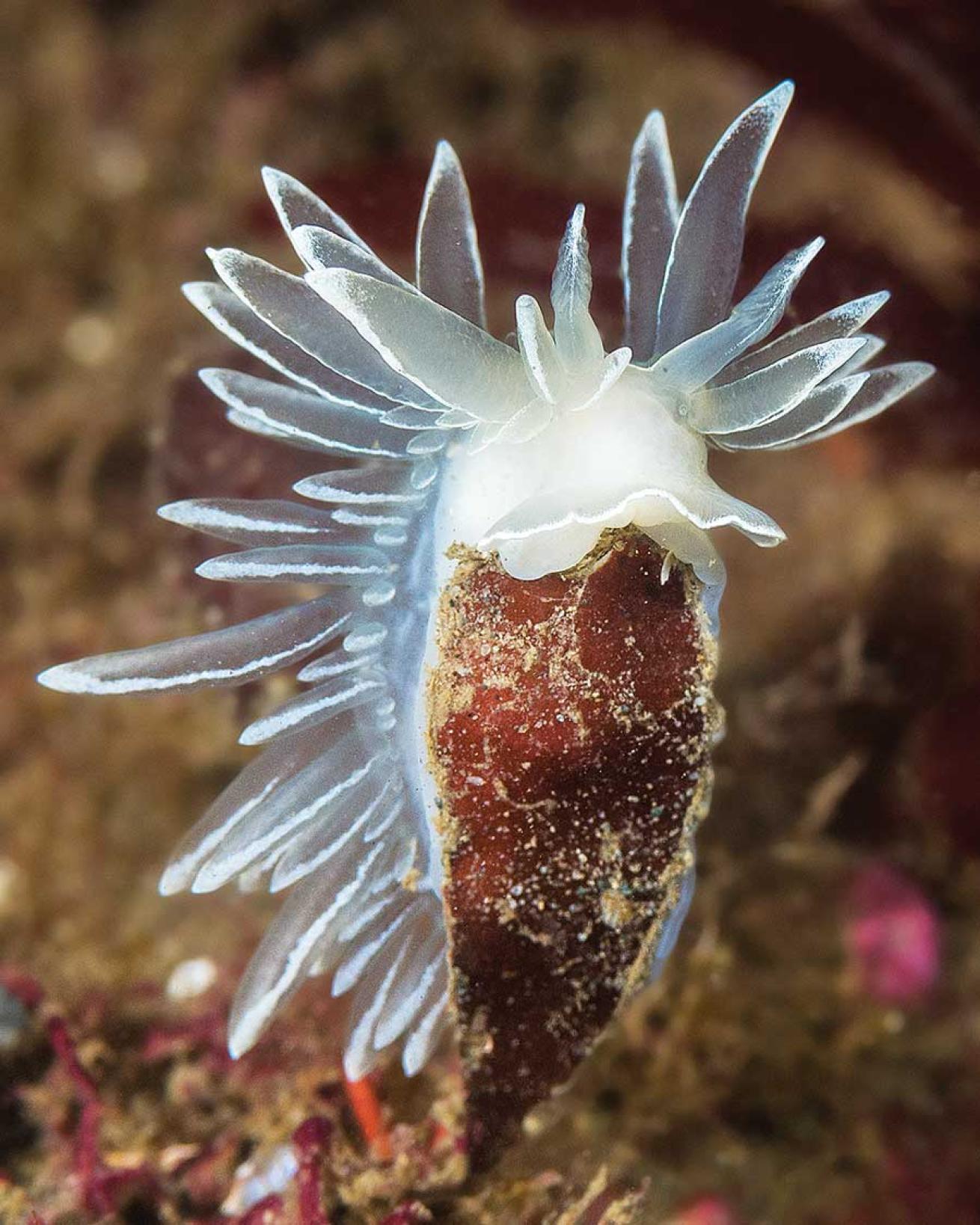
Tom Radio
Fox Island Bridge, Tacoma, Washington
Nudibranch are among the bridge's residents.
Go Now: underwatersports.com
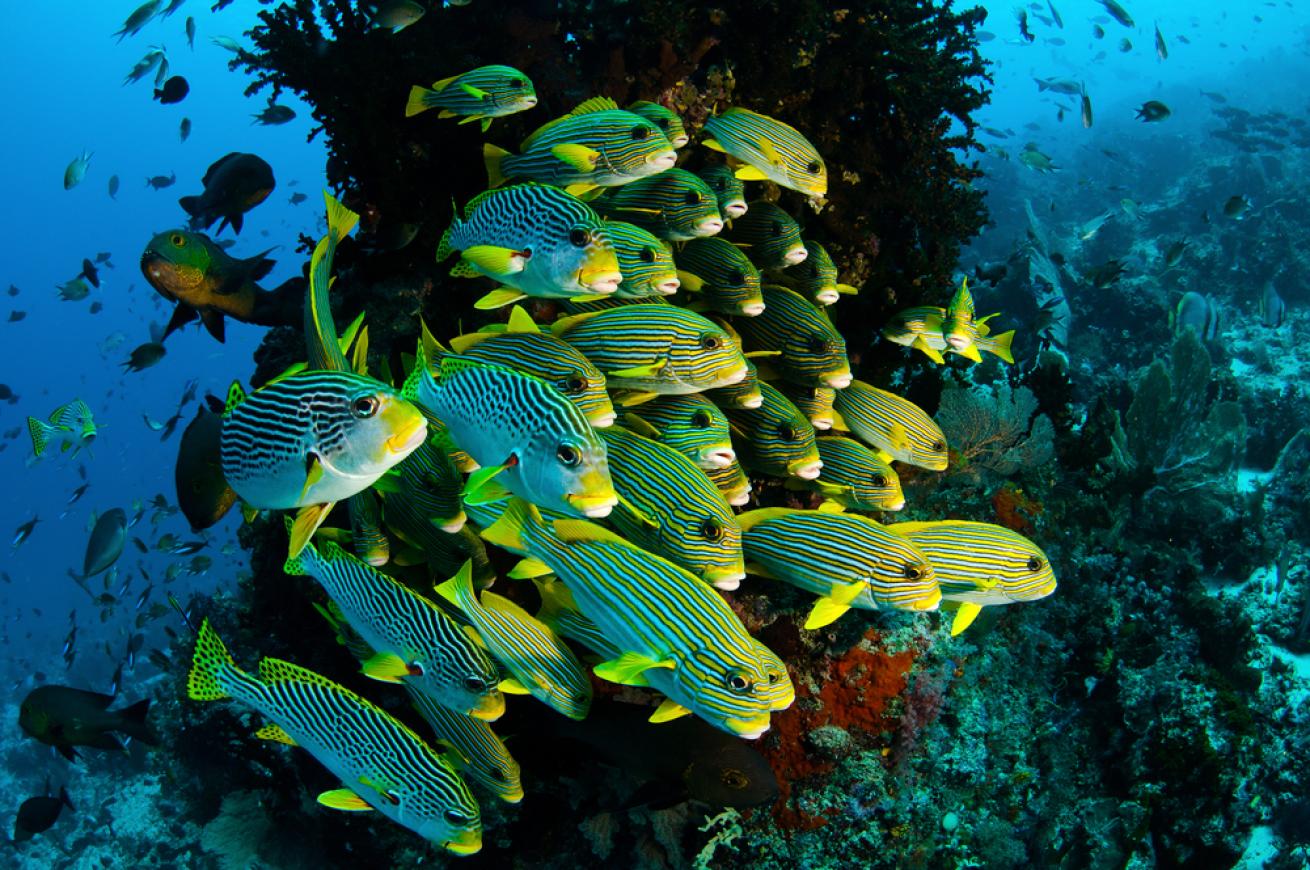
Shutterstock
Sweetlips, 7 Rig Reef, Brunei
In 1994, Shell Oil Company sunk nine inoperative platforms 62 feet deep off the coast of Brunei. Now the structures serve as gathering points for schooling sweetlips, snapper, chevron barracuda, humphead parrotfish, grouper and jacks.
Go Now: ponidivers.com
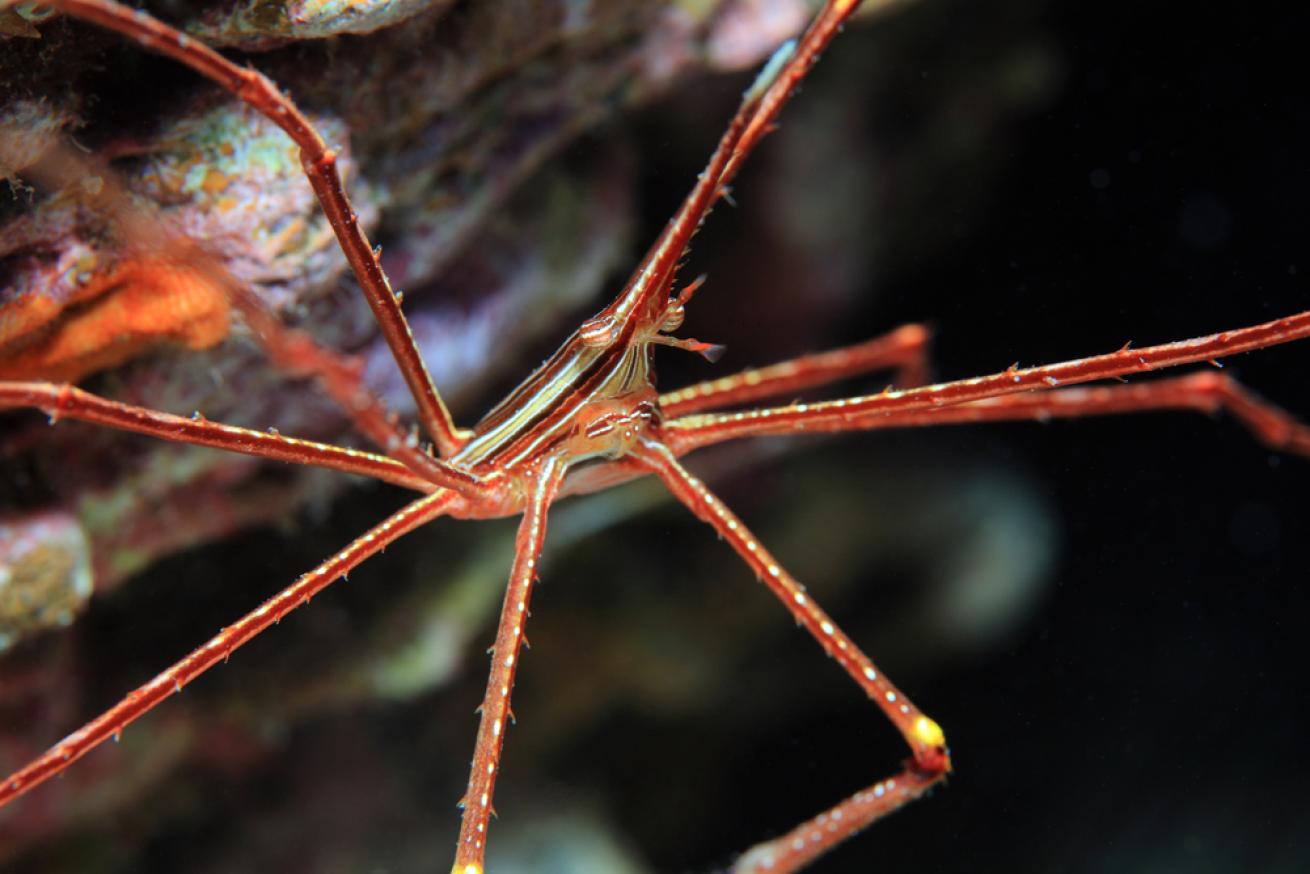
Shutterstock
Spider crab, Old Ponquogue Bridge, Long Island, New York
It’s not a site for those uncomfortable reading a tide chart. Accessible only during slack tide, this site near Southhampton is a marine park that’s home to clams, mussels, fluke, lobsters, spider crabs and large horseshoe crabs.
Go Now: hamptondive.com
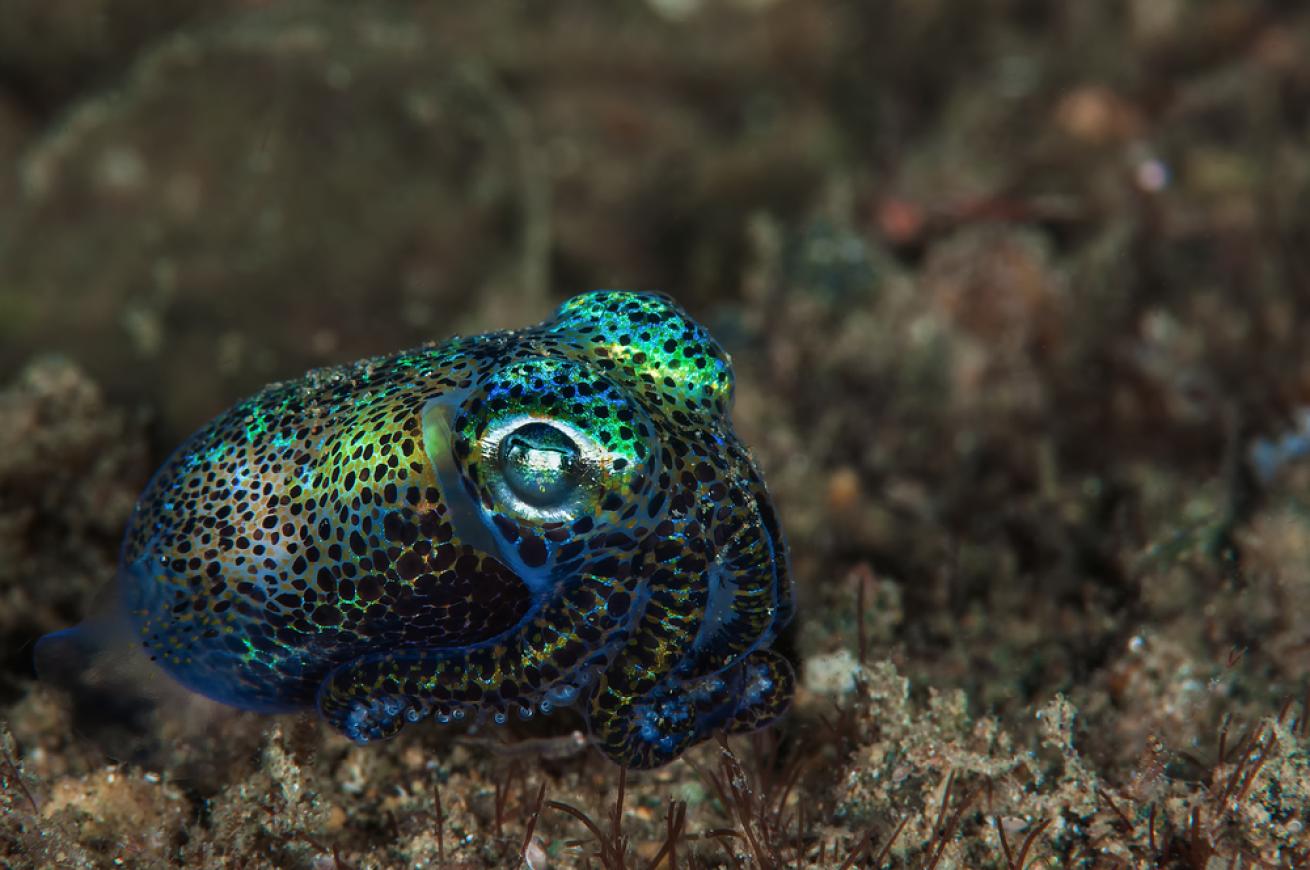
Shutterstock
Bobtail squid, Blairgowrie Pier, Victoria, Australia
Ample current at this site near the opening of Port Philip Bay means ample life. The pilings are habitat to seahorses, motley nudibranchs and bobtail squid.
Go Now: divevictoria.com.au
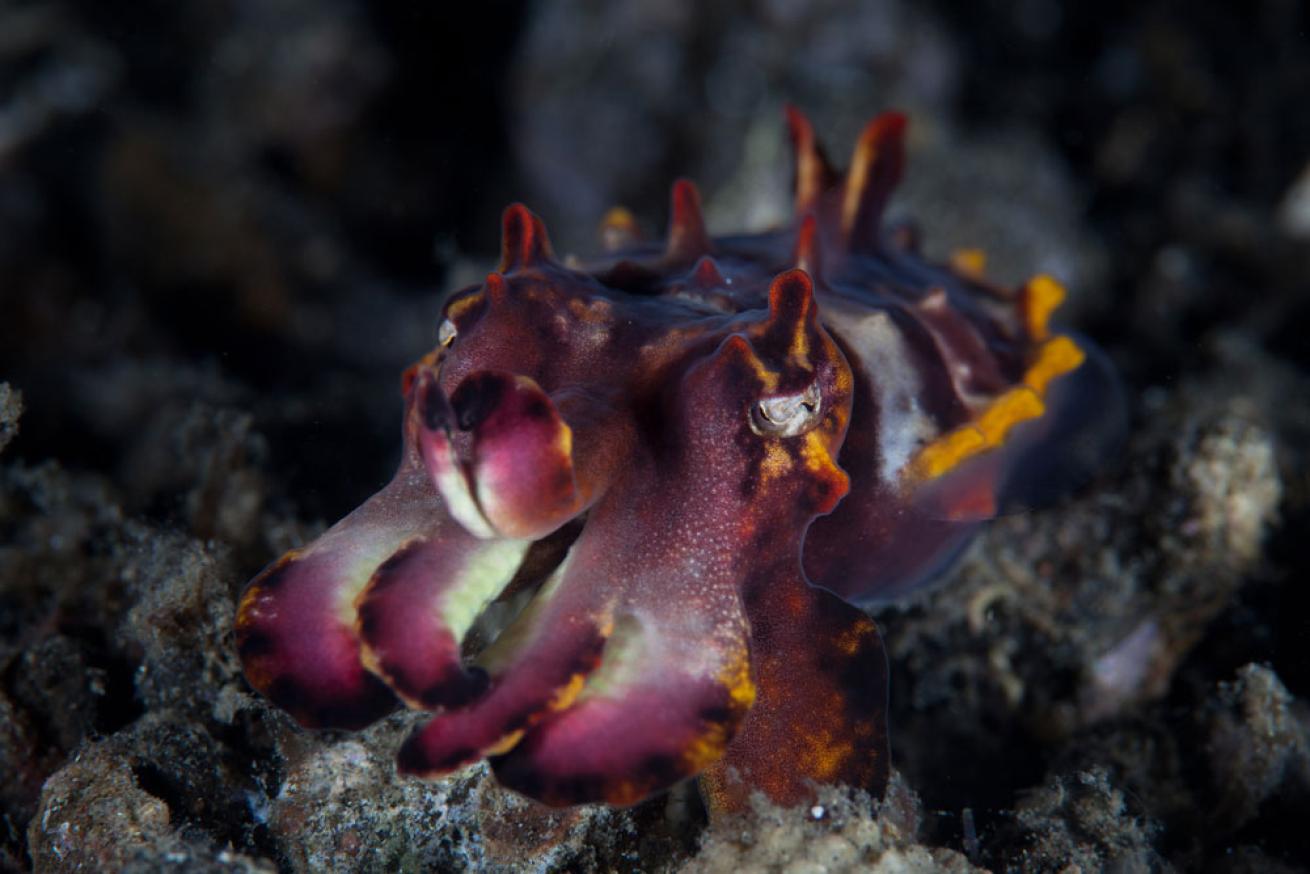
Shutterstock
Flamboyant cuttlefish, Police Pier, North Sulawesi, Indonesia
Off North Sulawesi, this rubble site is named for its location near the fuzz. It’s home to more than 300 oddities, including the flamboyant cuttlefish, pygmy cuttlefish and nine species of shrimp, including the skeleton and sexy varieties.
Go Now: lembehresort.com
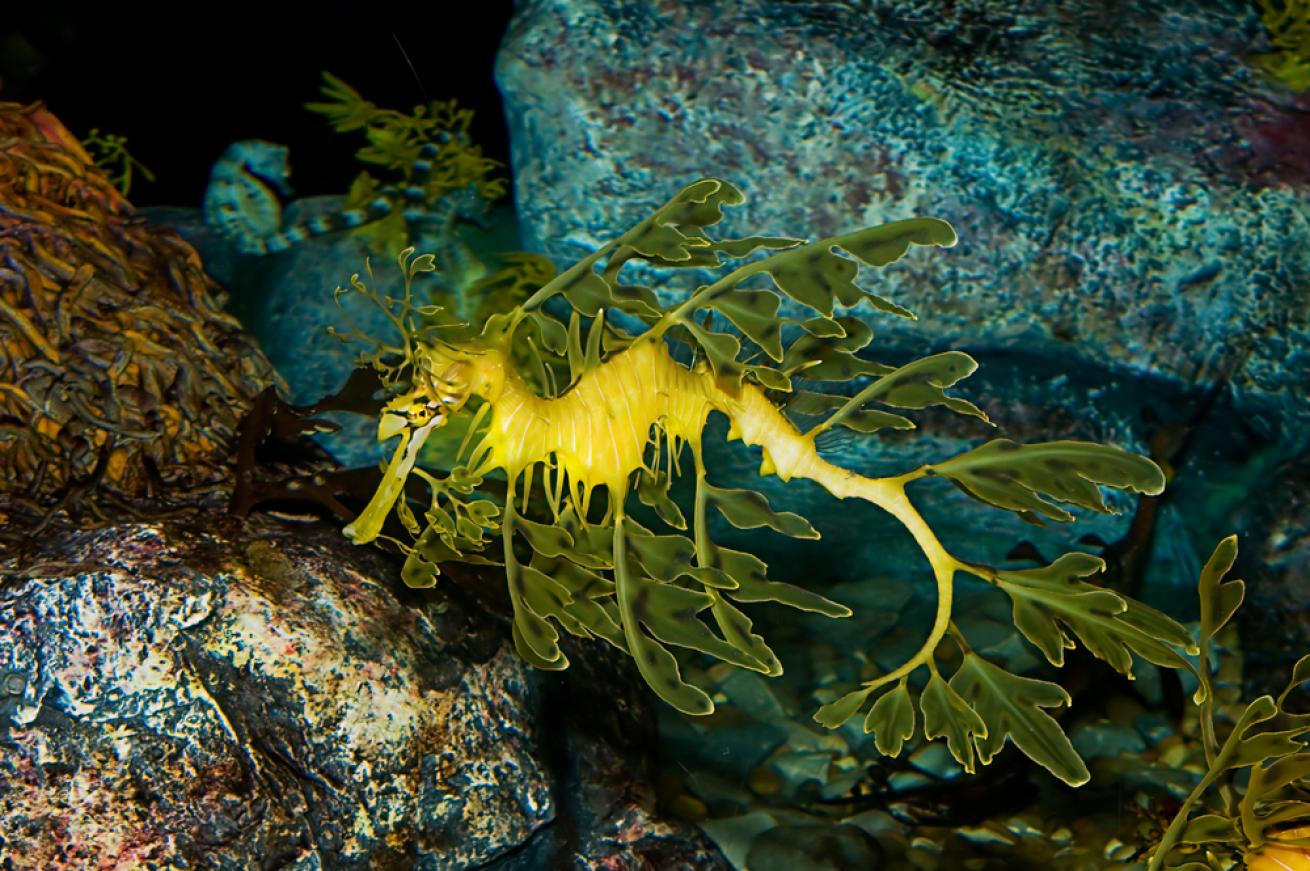
Shutterstock
Weedy sea dragons, Flinders Pier, Victoria, Australia
Because weedy sea dragons are on everyone’s must-see list, head to this sandy-bottom site south of Melbourne. Much of the site is kelp and seaweed, so be patient sorting through the vegetation for these Dr. Seuss-like finds.
Go Now: divevictoria.com.au
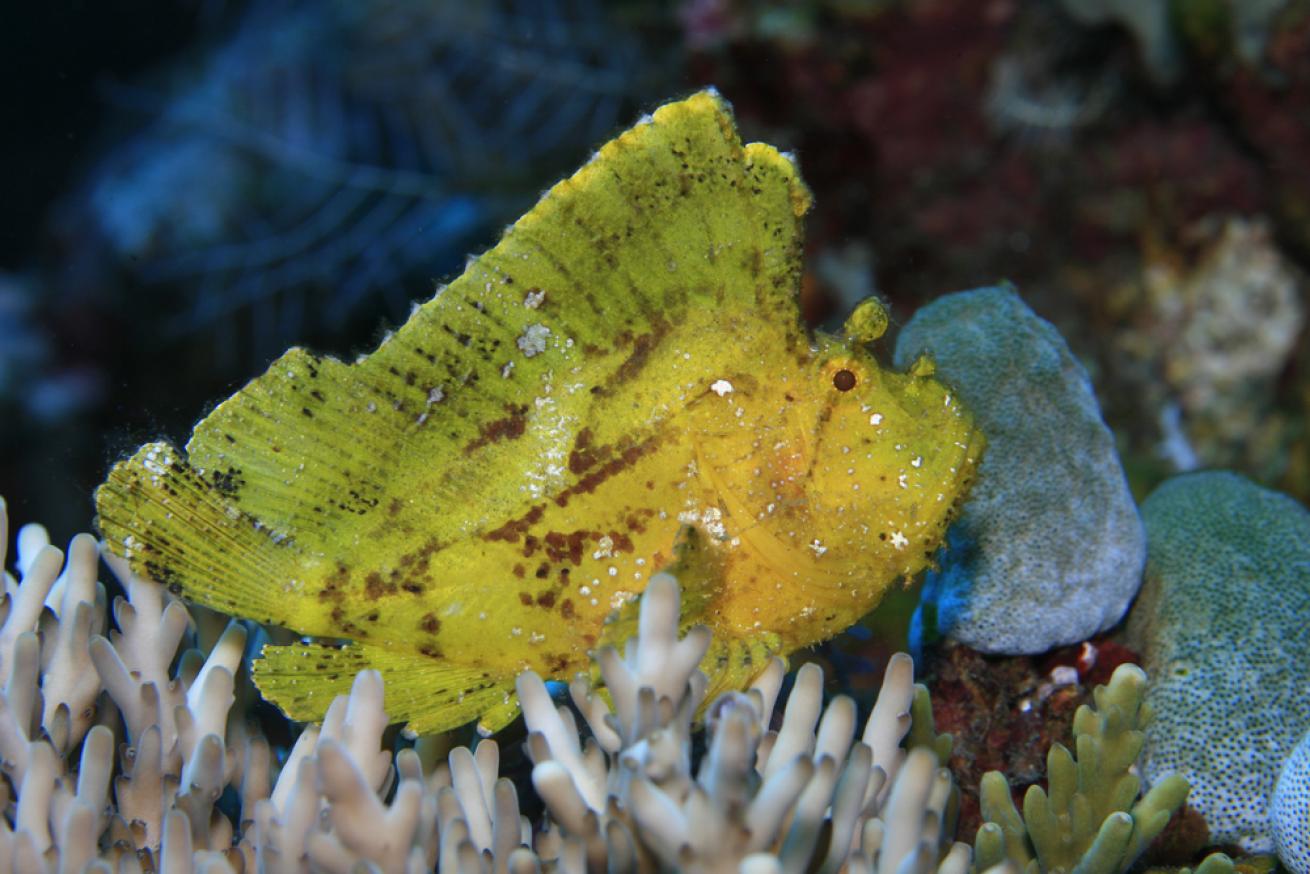
Shutterstock
Leaf scorpionfish, Pertamina Pier, East Timor, Indonesia
Unlike some others, Indonesia’s Pertamina Pier in Dili is best during the morning due to tides and visibility. Leaf scorpionfish, octopuses and frogfish nestle in the muck at this 43-foot-deep site in the Banda Sea.
Go Now: divetimor.com
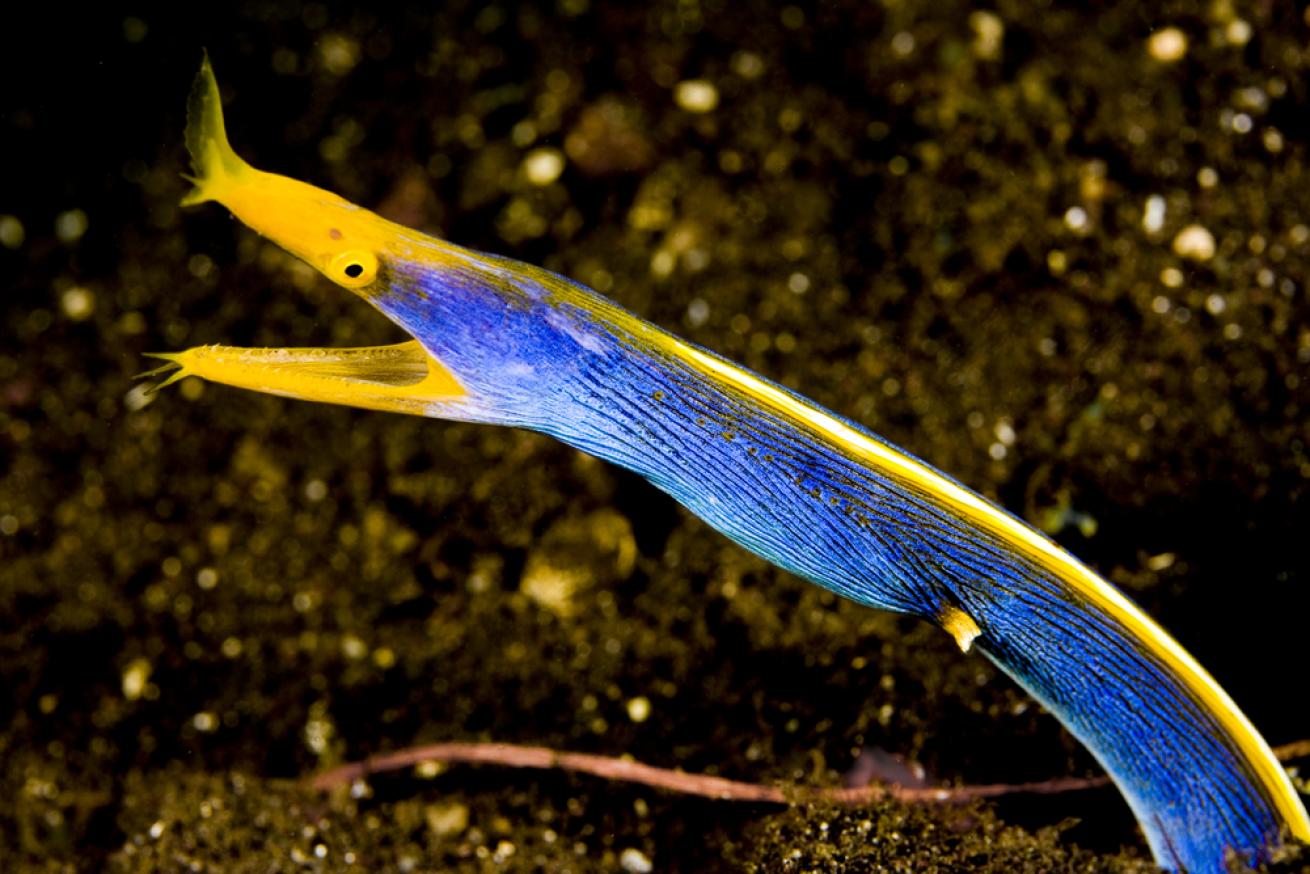
Shutterstock
Blue ribbon eel, Air Manis, Ambon Harbor, Indonesia
This in-town pier is a top muck dive. If you don’t mind the backdrop of bottles, old tires, boots and bicycles, you can see flamboyant cuttlefish, ghost pipefish, blue ribbon eels, and several species of octopus.
Go Now: divingmaluku.com
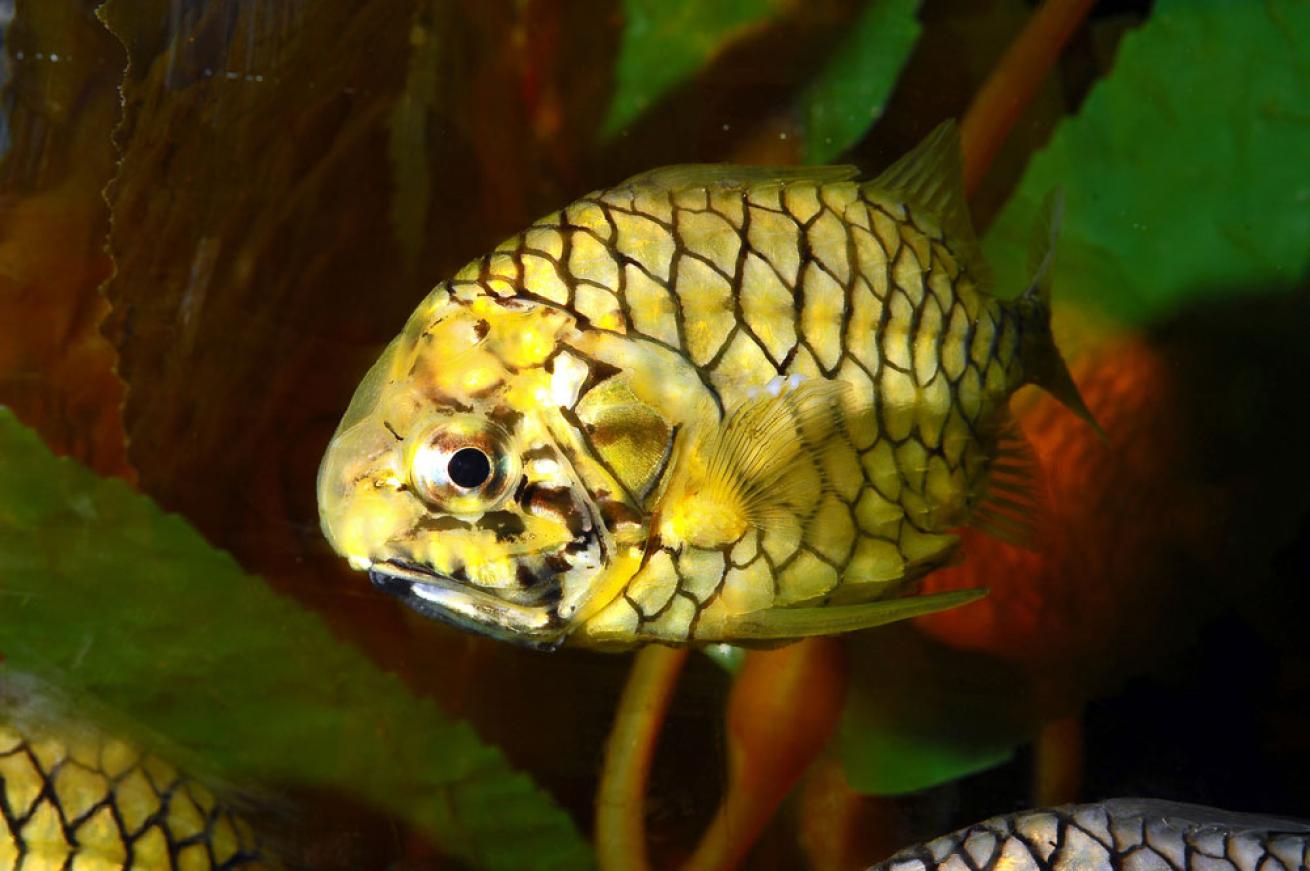
Shutterstock
Pineapplefish, Swansea Bridge, New South Wales, Australia
The biggest trick in diving this site on Australia’s east coast is trying to find the slack tide. You’ll see black cod, estuary cod, salmon, octopuses, eels and pineapplefish.
Go Now: newcastledive.com.au
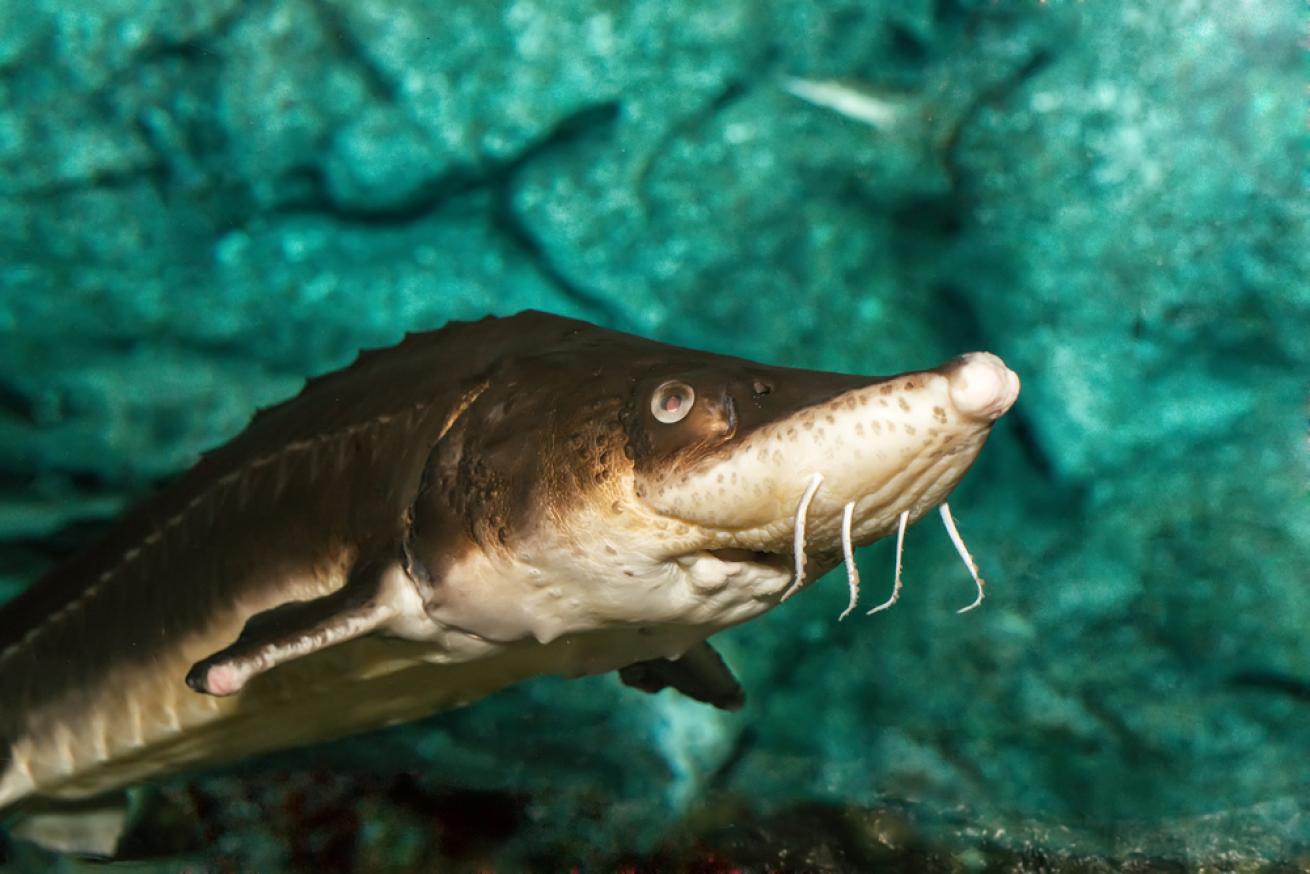
Shutterstock
Sturgeon, Blue Water Ridge, Port Huron, Michigan
The current makes this site for experienced divers only. Divers fly alongside gobies, bass, sturgeon and a handful of wrecks, but beware of the eddy just past the bridge.
Go Now: diveinnwatersports.net
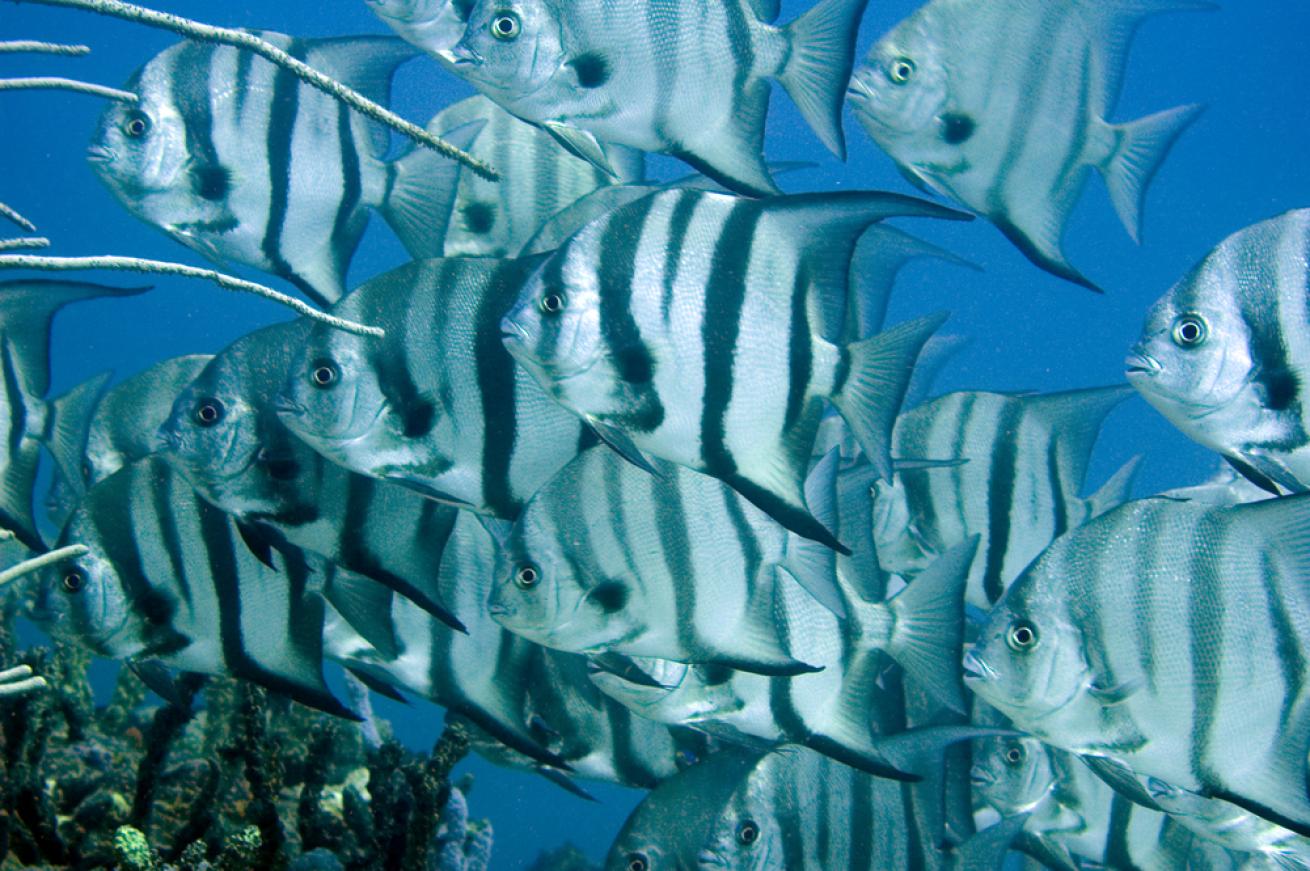
Shutterstock
Atlantic spadefish, Vermilion 171A, Gulf of Mexico
The Gulf has 4,000 diveable oil rigs: Choose Vermilion 171A for easy access. It’s about 2 miles from the put-in point, Cypremort Point State Park — two hours west of New Orleans. The reward is schools of Atlantic spadefish and crevalle jacks.
Go Now: captaintroywetzel.com










